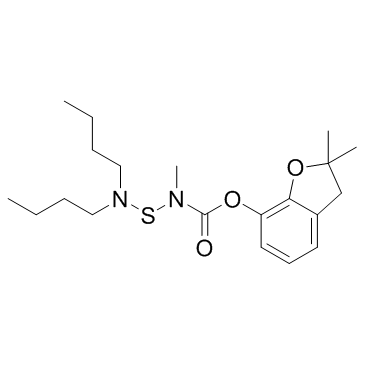Microbiology & Virology
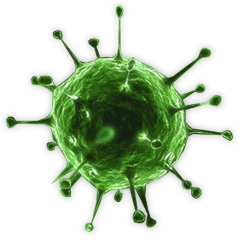
Microbiology & Virology
A virus is a small infectious agent that replicates inside living cells. Viruses cause many human diseases from small illnesses, like influenza, to more deadly diseases, like hepatitis B and HIV. Our body’s immune system defends against viral infection by generating specific antibodies to bind to and neutralize viral particles and by cell mediated immunity that destroys infected host cells.
Ziele für Microbiology & Virology
- Antibiotic(607)
- Bacterial lipoprotein targeting chaperone(0)
- CCR5(2)
- CMV(23)
- gp120/CD4(4)
- HBV(76)
- HCV(138)
- HIV(438)
- HSV(97)
- Influenza virus(133)
- NA(7)
- Reverse Transcriptase(68)
- RSV(39)
- SRPK(5)
- SARS-CoV(155)
- Antifungal(52)
- Orthopoxvirus(3)
- Antimalaria(6)
- Beta-Lactamase(0)
- VEEV(1)
- Arenavirus(9)
- Bacterial(1318)
- Enterovirus(24)
- Filovirus(13)
- Fungal(353)
- Parasite(395)
- Virus Protease(66)
- Chicken Pox & Shingles(2)
- Chikungunya(1)
- Coronaviruses(35)
- Dengue(5)
- DNA & RNA Polymerase Inhibitors(11)
- Ebola(0)
- Entry/Fusion Inhibitors(10)
- Epstein-Barr(2)
- Integrase Inhibitors(5)
- MERS(10)
- Others(0)
- Rhinoviruses(2)
- West Nile Virus(1)
- Yellow Fever(3)
- Zika(3)
- COVID-19(41)
- Antiviral(2)
Produkte für Microbiology & Virology
- Bestell-Nr. Artikelname Informationen
-
GC14233
BIO-acetoxime
6-Bromoindirubin-3'-acetoxime, GSK3 Inhibitor X
BIO-Acetoxim (BIA) ist ein potenter und selektiver GSK-3-Inhibitor mit IC50-Werten von jeweils 10 nM fÜr GSK-3α/β.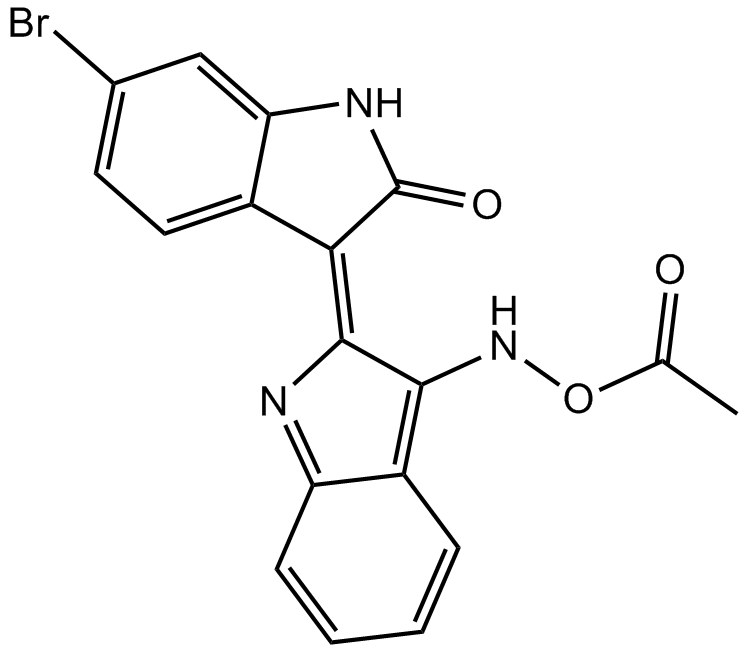
-
GC68766
Bio-AMS TFA
Bio-AMS (TFA) ist ein wirksamer Inhibitor des Biotin-Protein-Ligase-Enzyms bei Bakterien. Bio-AMS (TFA) hemmt selektiv Mycobacterium tuberculosis (Mtb) und die Biosynthese von Fettsäuren und Lipiden.

-
GC52326
Biotin-PEG4-LL-37 (human) (trifluoroacetate salt)
A biotinylated and pegylated form of LL-37

-
GC12426
Birinapant (TL32711)
TL-32711
Ein Antagonist von cIAP1, cIAP2 und XIAP.
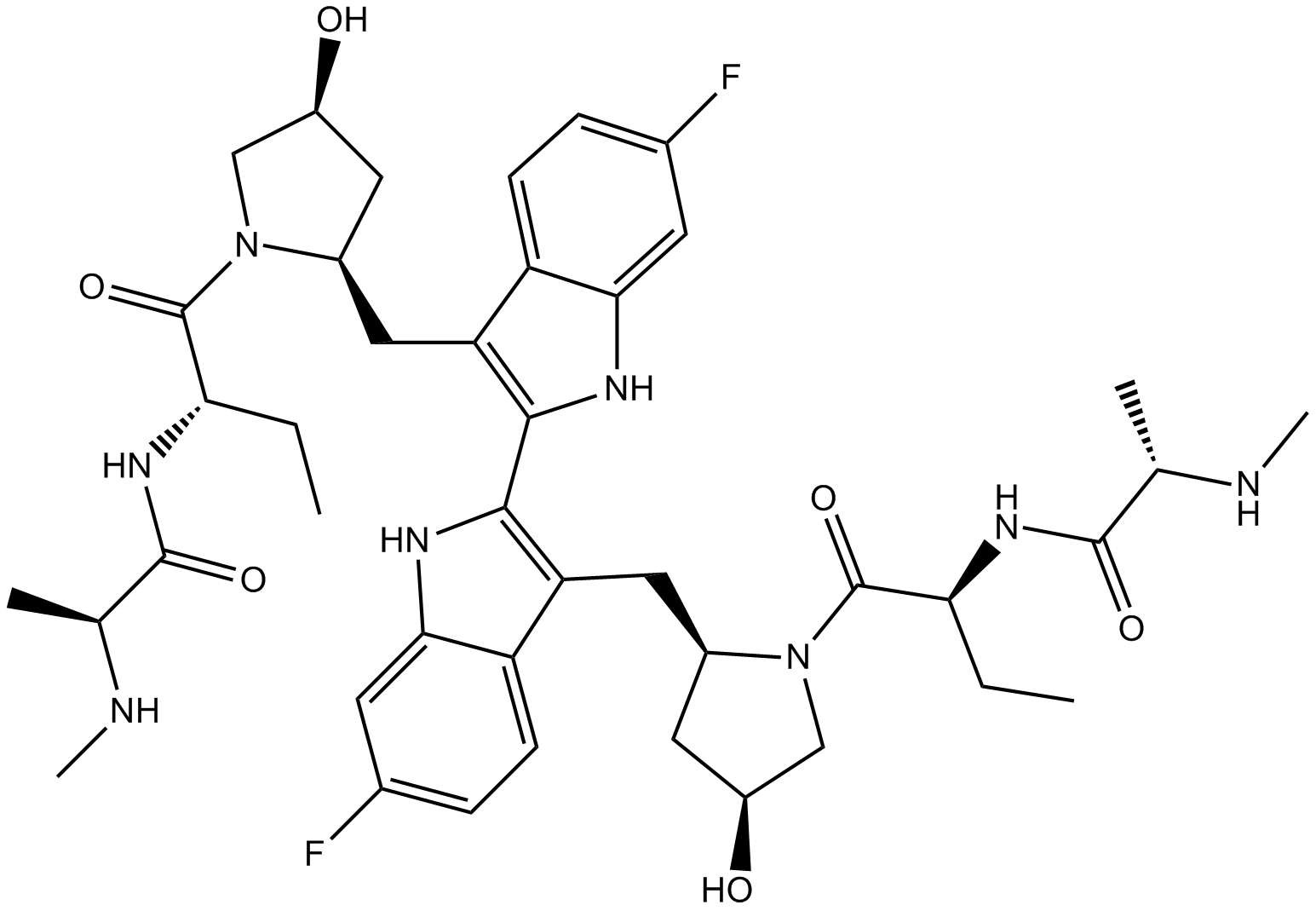
-
GC68773
Bisdionin C
Bisdionin C ist ein effektiver Hemmstoff für GH18 Chitinase und hat eine IC50 von 0,2 μM gegenüber A. fumigatus ChiB1 (AfChiB1). Die Hemmwirkung von Bisdionin C auf HCHT (Chitotriosidase des menschlichen Makrophagen) und saure Säugetier-Chitinase (AMCase) beträgt jeweils 8,3 bzw. 3,4 μM.

-
GC14716
Bisindolylmaleimide IV
Arcyriarubin A,BIM IV
Bisindolylmaleimid IV (Arcyriarubin A) ist ein potenter Proteinkinase C (PKC)-Inhibitor mit IC50s im Bereich von 0,1 bis 0,55 μM.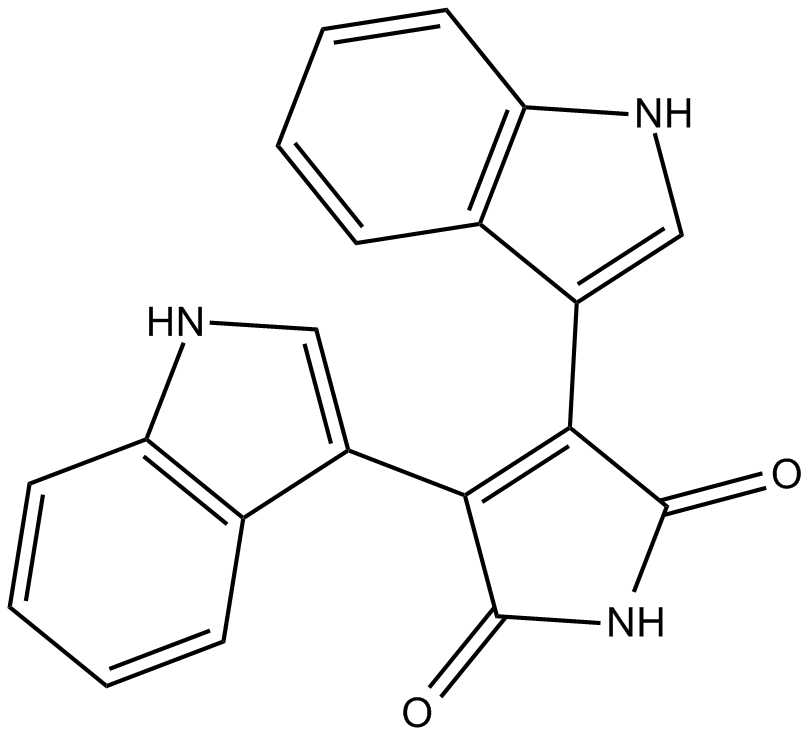
-
GC61825
Bismuth subcarbonate
Bismuth carbonate oxide
Bismutsubcarbonat (Bismutcarbonatoxid) ist ein typischer Bi-basierter Halbleiter, der weithin als antibakterielles Mittel, Sensoren, Superkondensatoren und Photokatalysatoren eingesetzt wird.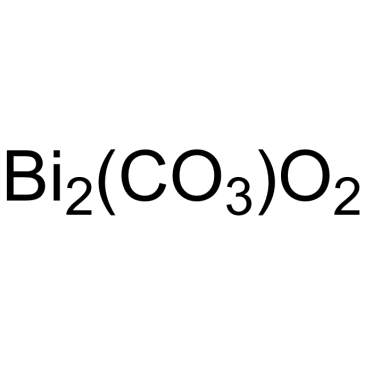
-
GC15357
Bismuth Subcitrate Potassium
Wismutsubcitrat-Kalium ist ein Antibiotikum gegen 12 C.
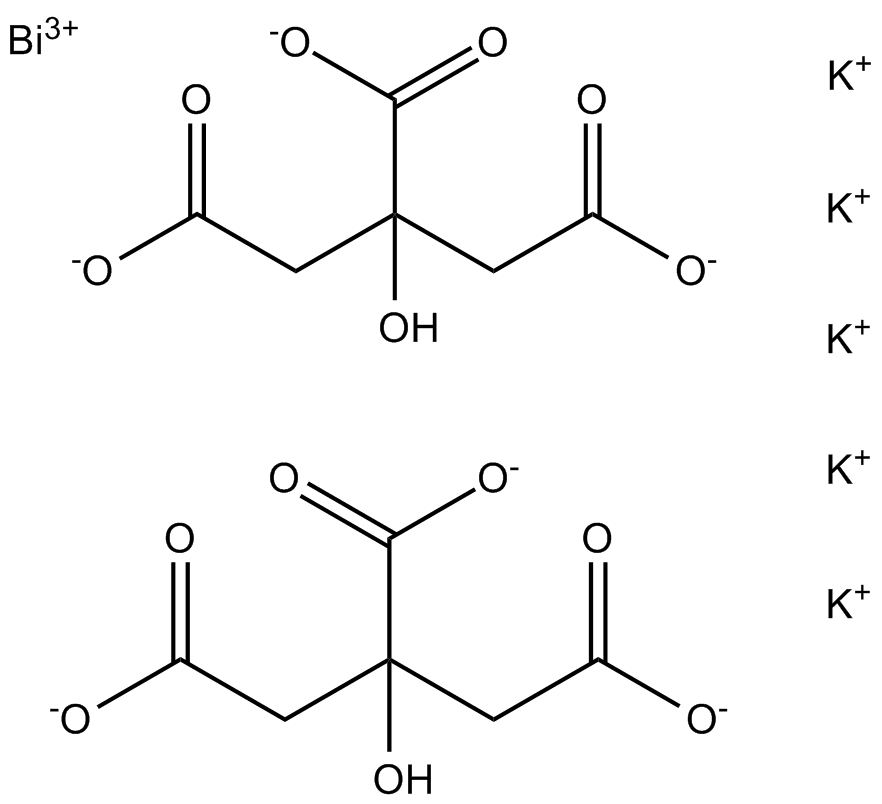
-
GC15976
Bithionol
CP 3438, NSC 9872, NSC 47129
potent inhibitor of soluble adenylyl cyclase (sAC)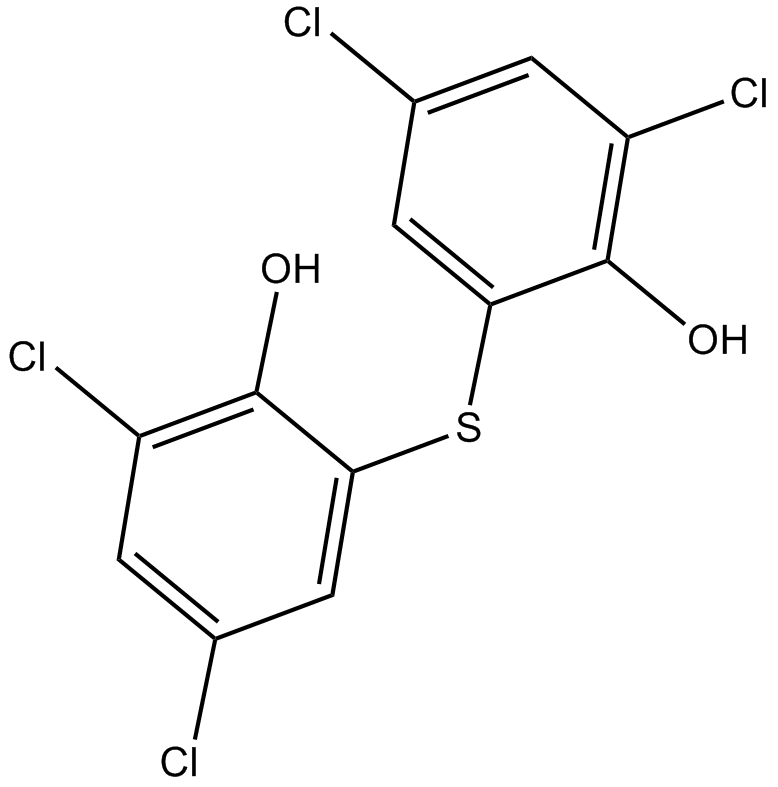
-
GC35526
Bithionol sulfoxide
Bithionolsulfoxid ist ein Antiinfektionsmittel für Parasiten.
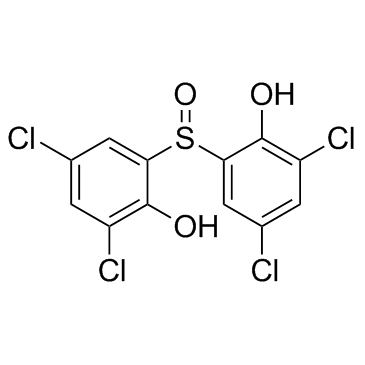
-
GC32239
Bitoscanate (p-Phenylene diisothiocyanate)
Bitoscanat (p-Phenylendiisothiocyanat) (p-Phenylendiisothiocyanat) ist eine organische chemische Verbindung, die zur Behandlung von HakenwÜrmern verwendet wird.
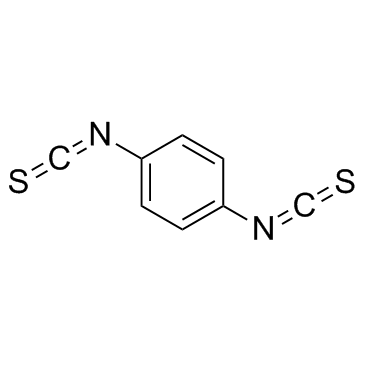
-
GC35531
BKI-1369
BKI-1369 ist ein Bump-Kinase-Inhibitor (BKI).
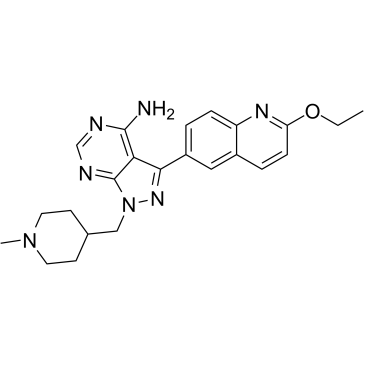
-
GC10909
Bleomycin A5 (hydrochloride)
Pingyangmycin
Bleomycin A5 (Pingyangmycin)-Hydrochlorid ist ein antineoplastisches Glykoprotein-Antibiotikum.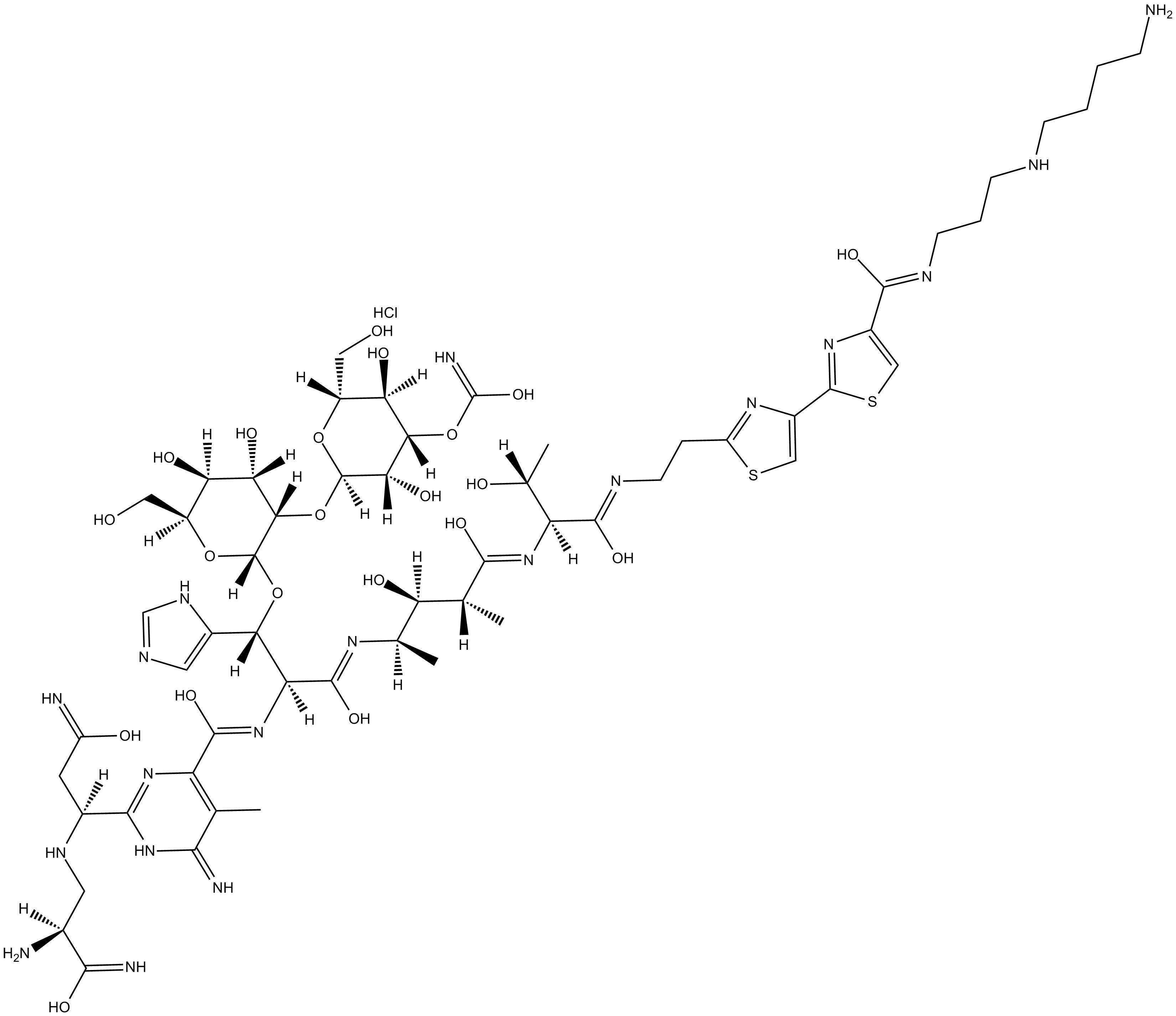
-
GC60089
Bleomycin hydrochloride
Bleomycinhydrochlorid ist ein Inhibitor der DNA-Synthese. Bleomycinhydrochlorid ist ein DNA-schädigendes Mittel. Bleomycinhydrochlorid ist ein antitumoröses Antibiotikum.
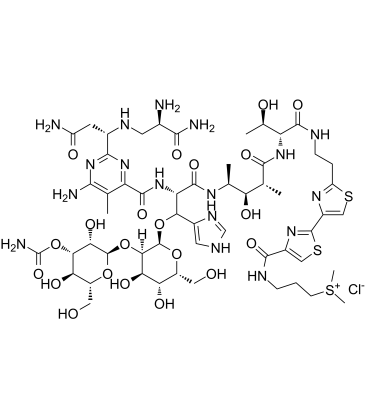
-
GC15819
Bleomycin Sulfate
Blenoxane;Bleo;Blexane
Bleomycin wird von Streptomyces verticillis produziert.
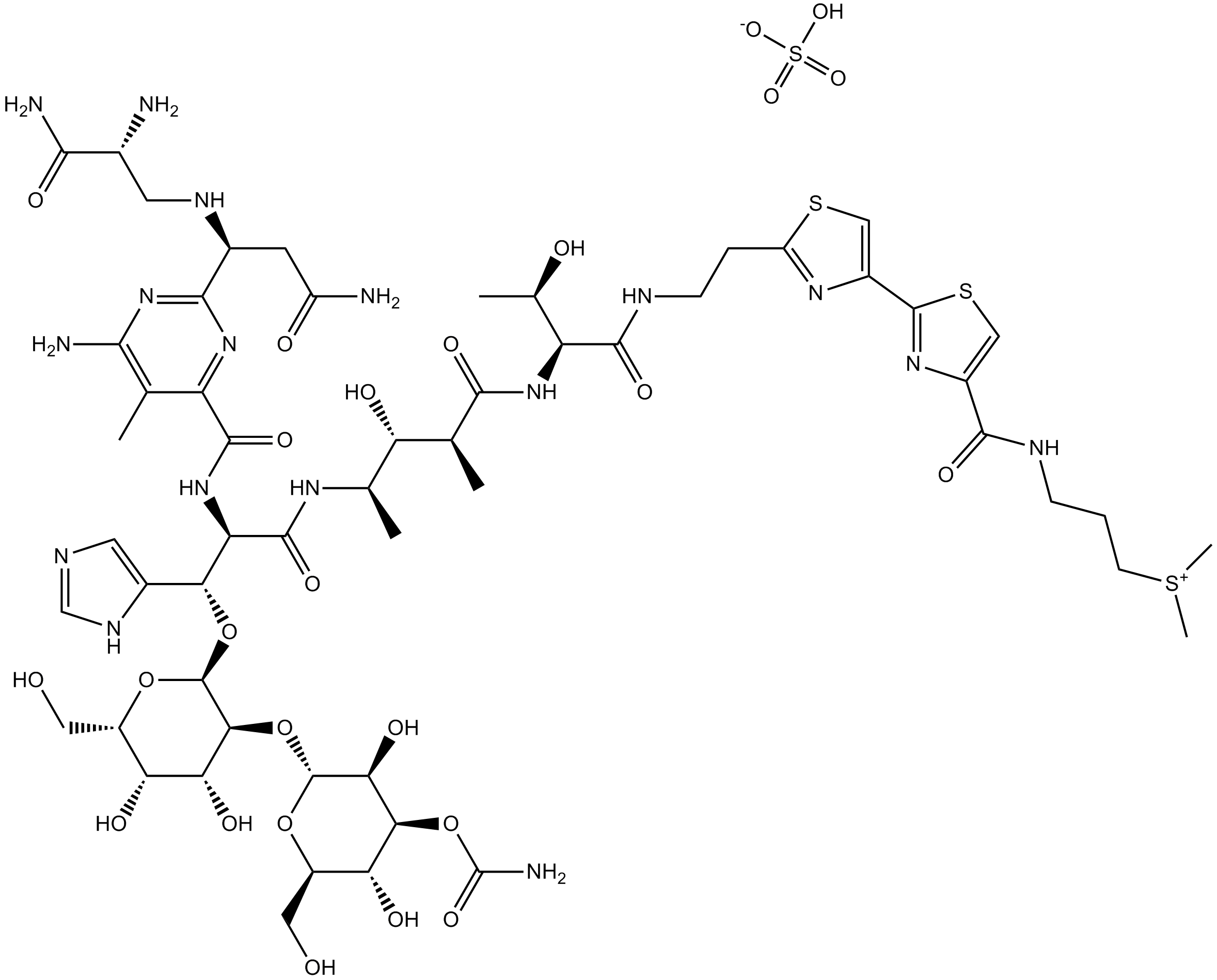
-
GC60648
BLT-1
Block Lipid Transport-1
BLT-1, ein Thiosemicarbazon-Kupferchelator, ist ein selektiver Scavenger-Rezeptor B, Typ 1 (SR-BI)-Inhibitor.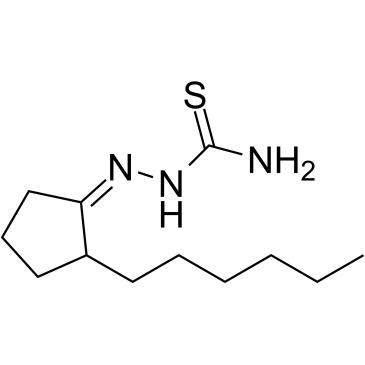
-
GC18217
BM212
BM212 ist ein potenter Hemmer des mykobakteriellen Membranproteins Large 3 (MmpL3).
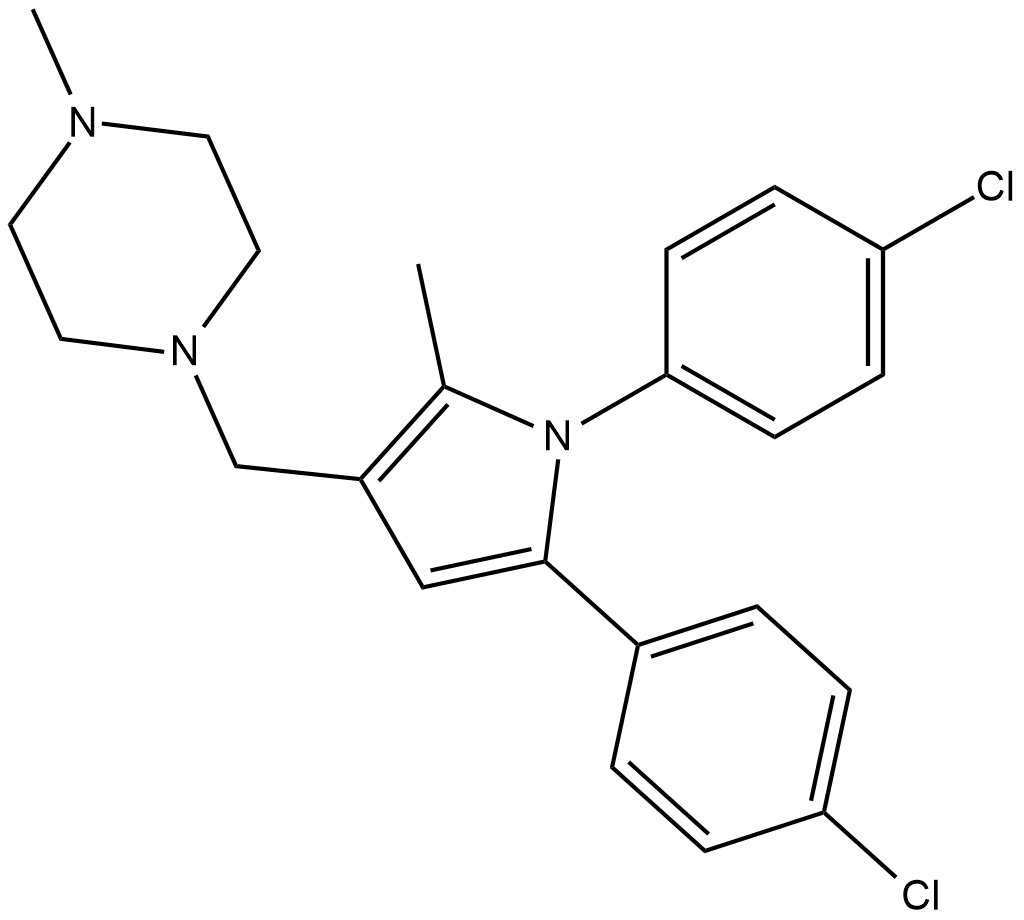
-
GC32204
BM635
BM635 ist ein MmpL3-Inhibitor mit herausragender antimykobakterieller AktivitÄt.
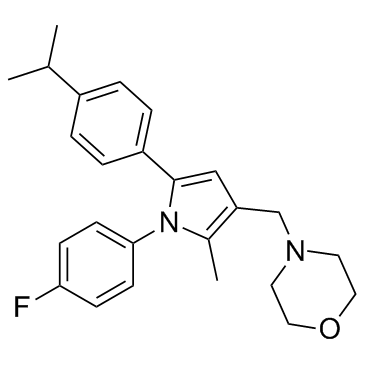
-
GC10263
BMS-378806 (BMS-806)
BMS-806
BMS-378806 (BMS-806) ist ein potenter HIV-1-Anheftungsinhibitor, der die CD4-gp120-Wechselwirkungen stÖrt.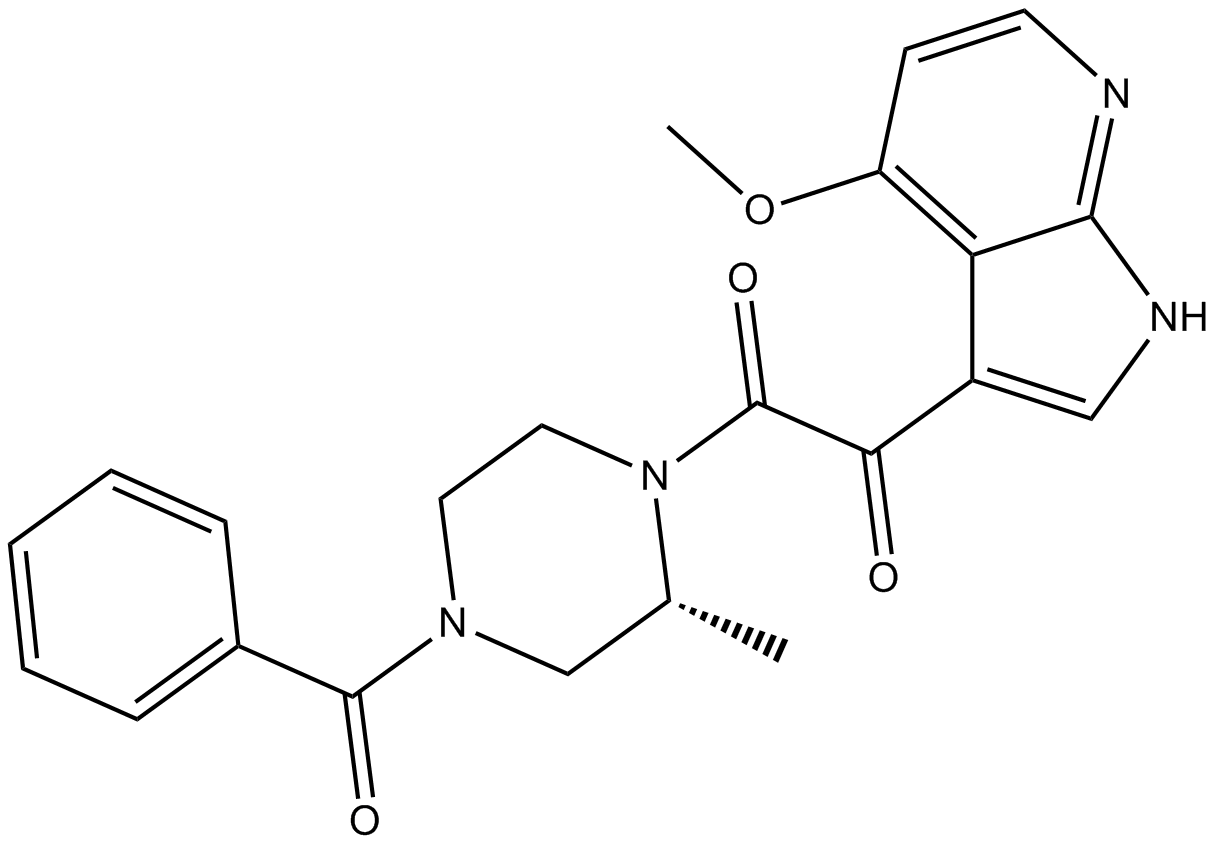
-
GC68779
BMS-433771
BMS-433771 ist ein wirksamer Hemmstoff des respiratorischen Synzytialvirus (RSV) mit oralen Aktivitäten. BMS-433771 ist wirksam gegen RSV der Gruppe A und B, wobei der EC50-Wert bei 20 nM liegt. BMS-433771 kann für die Erforschung von Atemwegserkrankungen verwendet werden.

-
GC68780
BMS-433771 dihydrochloride hydrate
BMS-433771 Dihydrochlorid-Hydrat ist ein wirksamer Inhibitor des respiratorischen Synzytialvirus (RSV) mit oralen Aktivitäten. BMS-433771 Dihydrochlorid-Hydrat ist wirksam gegen RSV der Gruppe A und B, mit einem durchschnittlichen EC50-Wert von 20 nM. BMS-433771 Dihydrochlorid-Hydrat kann für die Erforschung von Atemwegserkrankungen verwendet werden.

-
GC10570
BMS-538203
HIV integrase inhibitor,highly efficient
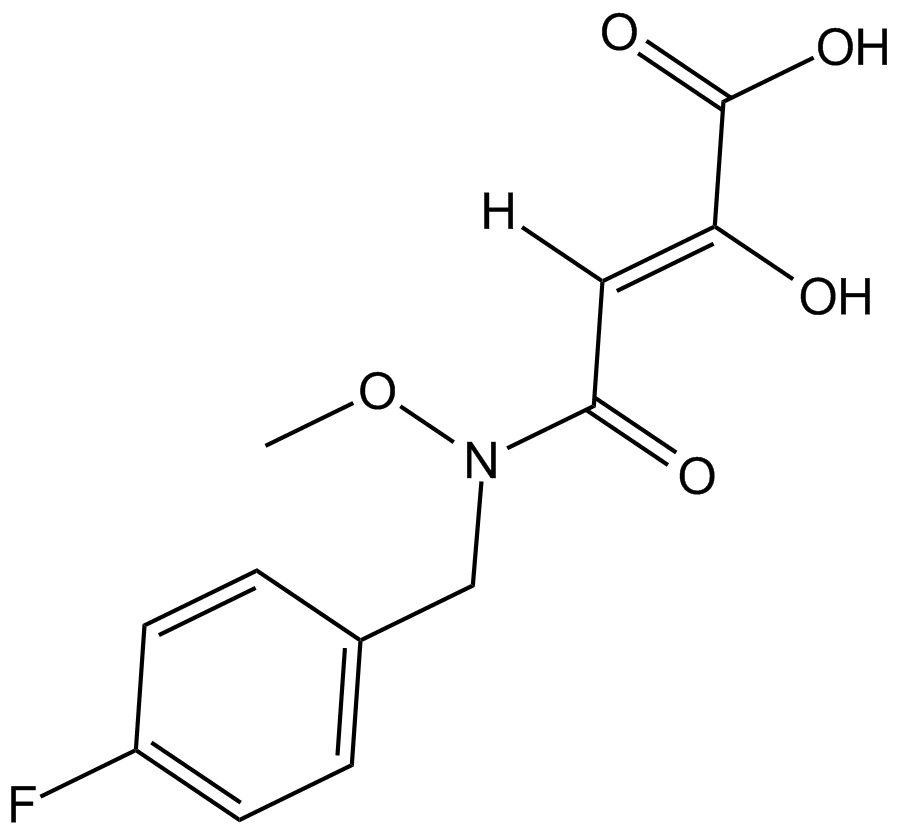
-
GC10794
BMS-626529
An HIV-1 attachment inhibitor
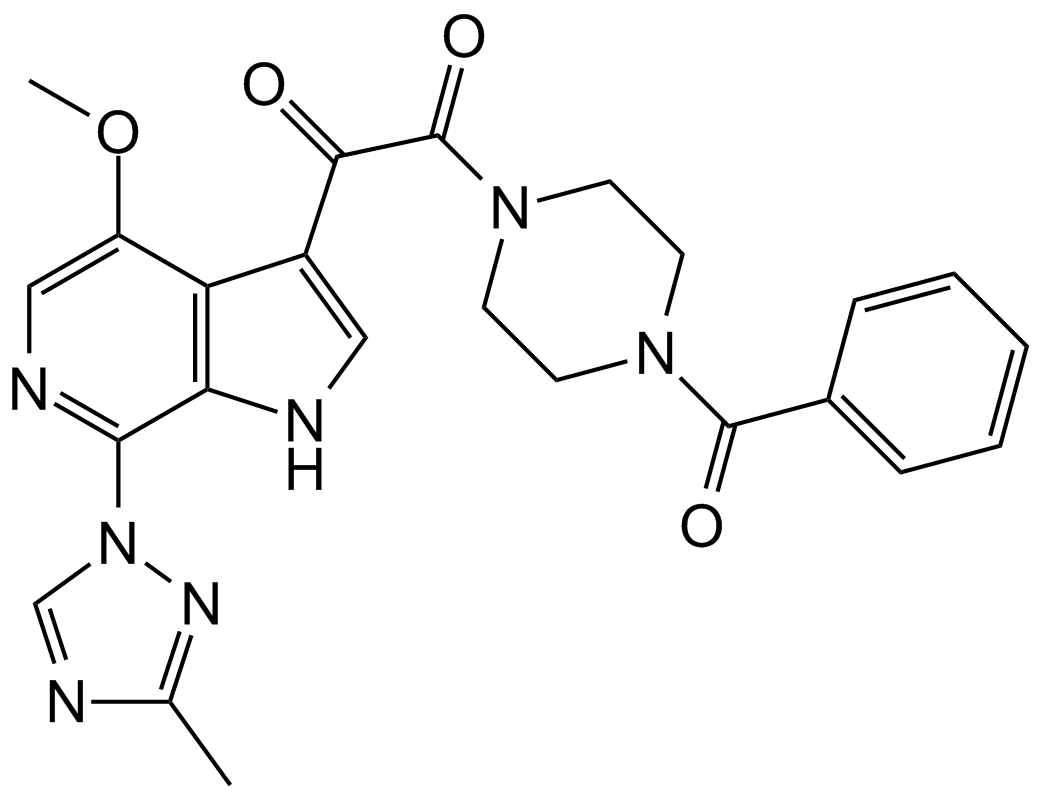
-
GC13119
BMS-663068
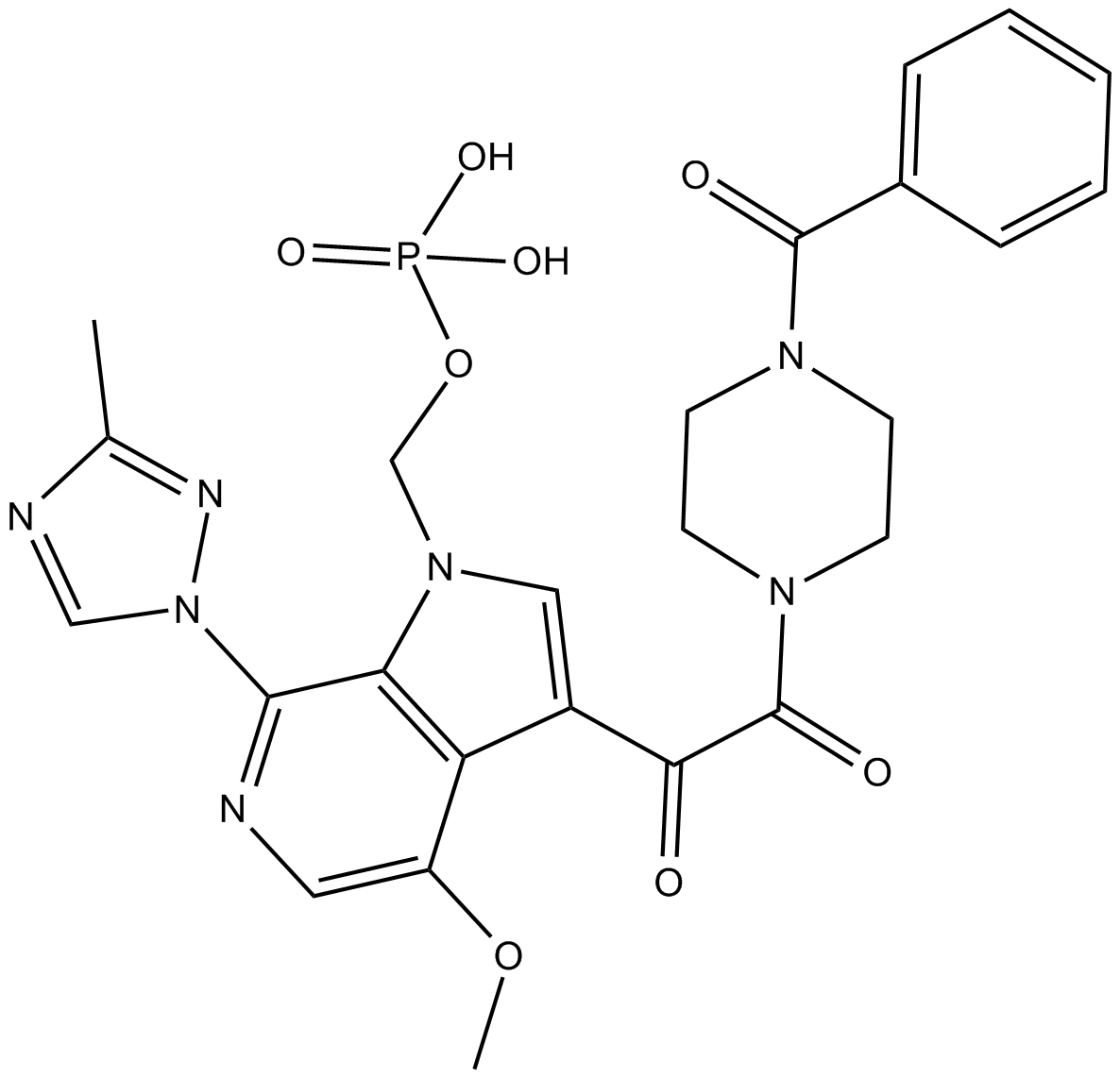
-
GC11923
BMS-707035
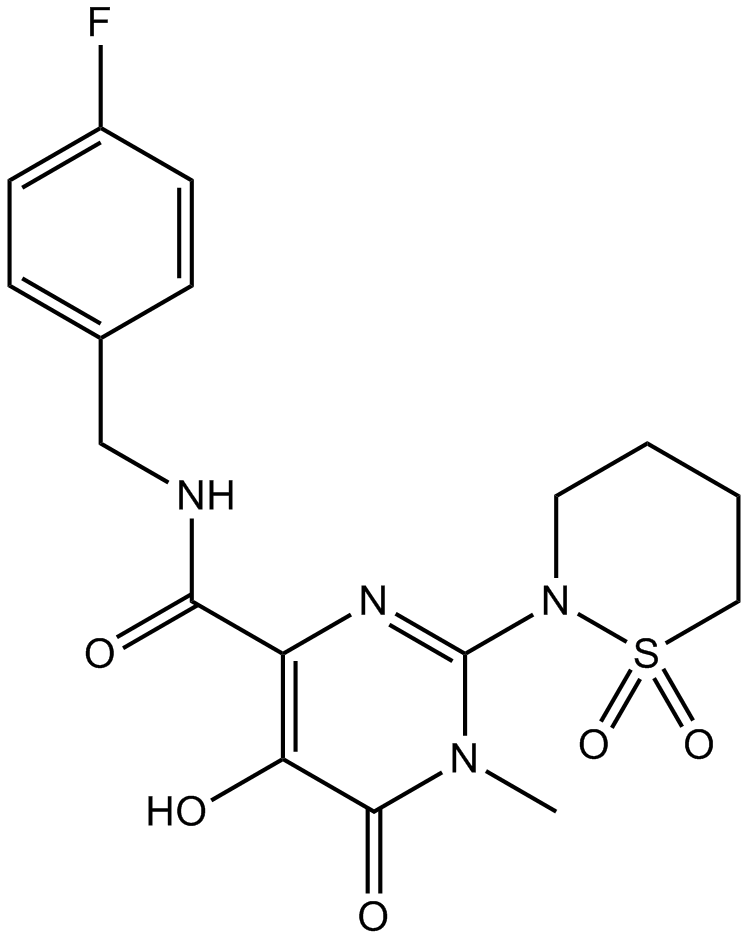
-
GC70501
BMS-929075
BMS-929075 ist ein potenter und oral aktiver HCV NS5B Replikat-allosterischer Inhibitor an der Palmenstelle.

-
GC32256
BMY-43748
BMY-43748 ist ein vielversprechender antibakterieller Wirkstoff, der eine große antibakterielle AktivitÄt in vitro und in vivo aufweist.
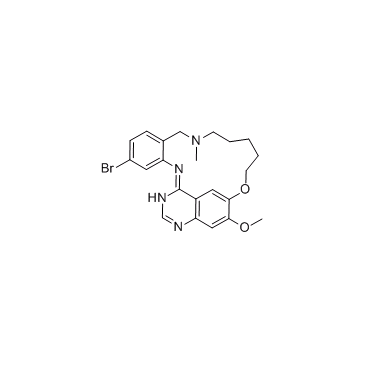
-
GC32349
BO3482
BO3482 hat eine antimikrobielle AktivitÄt und kann das Wachstum von Methicillin-resistenten Staphylokokken (MRS) mit einer MIC90 von 6,25 mg/ml hemmen.
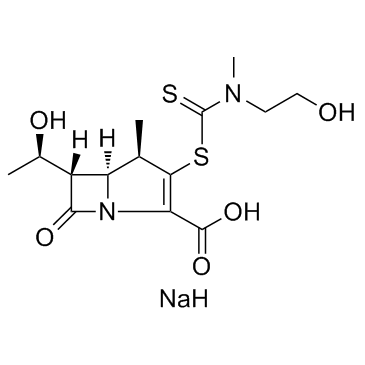
-
GC10959
Boceprevir
Victrelis
An NS3/4A protease inhibitor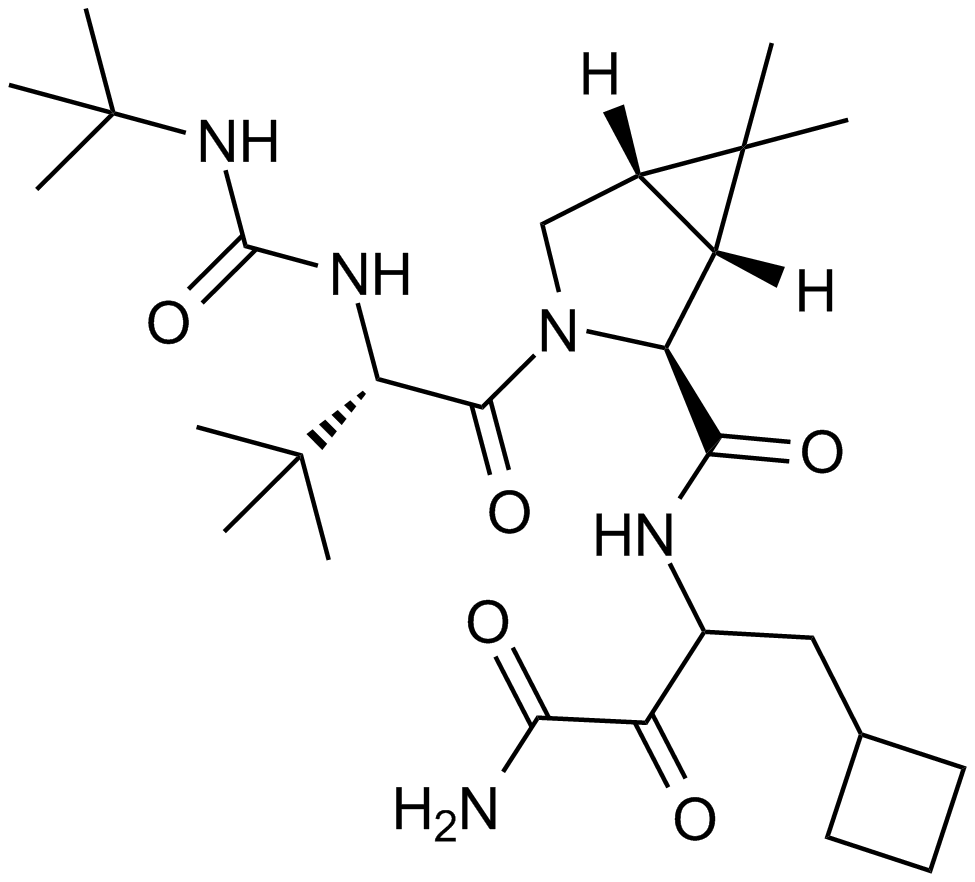
-
GC46936
Boceprevir-d9
An internal standard for the quantification of boceprevir
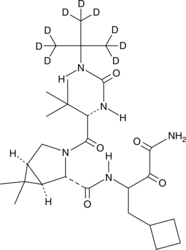
-
GC32299
Bombinin-Like Peptide BLP-1
Bombinin-Like Peptide BLP-1 ist ein antimikrobielles Peptid der Bombina-Spezies.
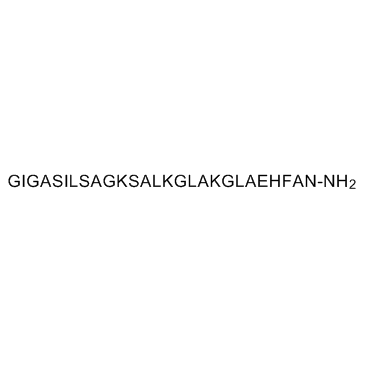
-
GC61885
Bonducellpin D
Bonducellpin D ist ein aus Caesalpinia minax isoliertes Furanoditerpenoidlacton.
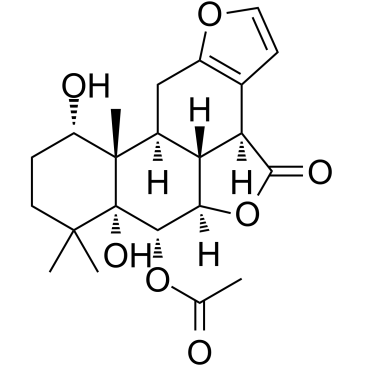
-
GC42967
Boromycin
NSC 121380
Boromycin ist eine Verbindung, die aus einer aus Streptomycesbioticus isolierten Verbindung isoliert wurde.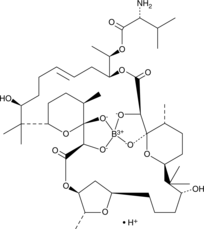
-
GC11040
Borrelidin
NSC 216128, Treponemycin
Borrelidin (Treponemycin) ist ein bakterieller und eukaryaler Threonyl-tRNA-Synthetase-Inhibitor, ein nitrilhaltiges Makrolid-Antibiotikum, das aus Streptomyces rochei isoliert wurde.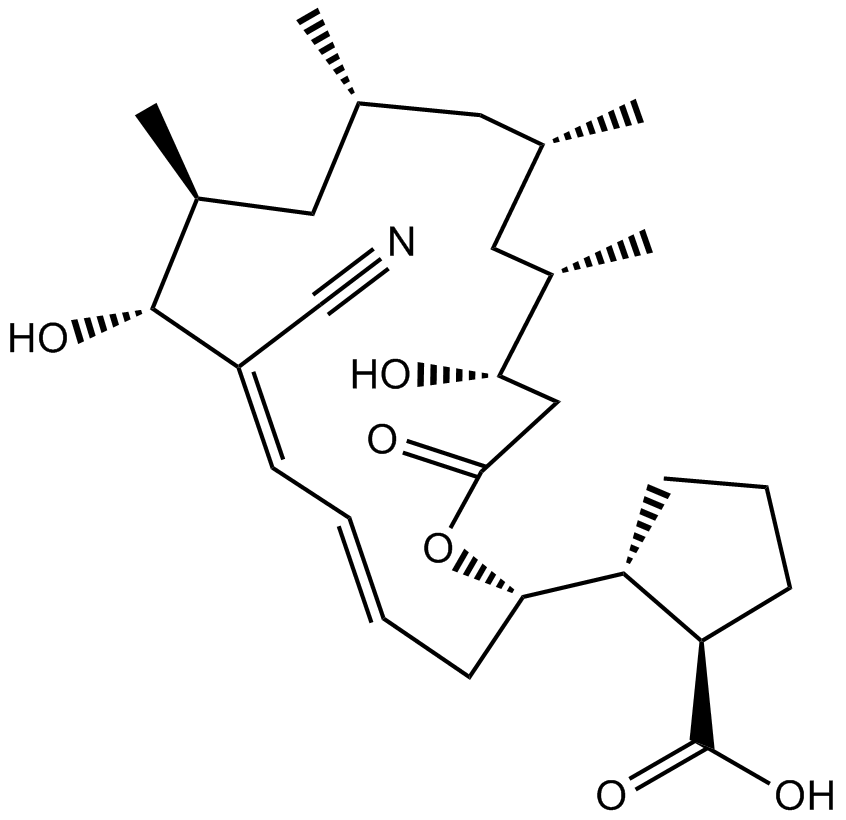
-
GC65355
BPH-715
BPH-715 ist ein Bisphosphonat, das das Wachstum von Plasmodium im Leberstadium hemmt, mit einem IC50 von 10 μM fÜr exoerythrozytÄre Formen von Plasmodium in HepG2-Zellen.
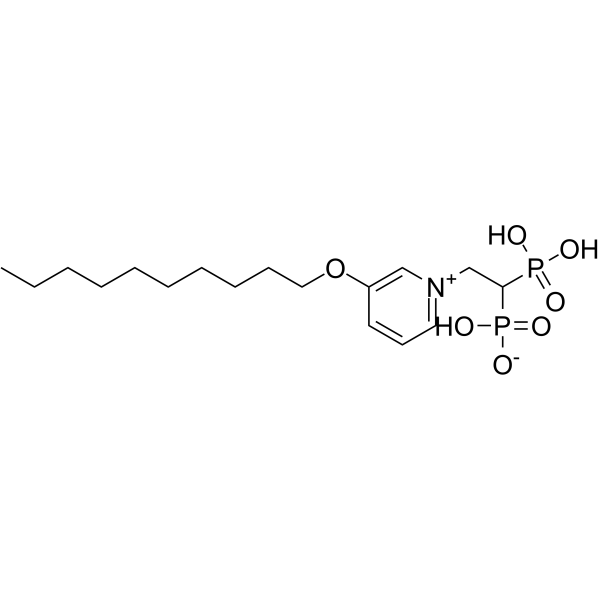
-
GC42969
bpV(phen) (potassium hydrate)
Bisperoxovanadium(phen), Potassium Bisperoxo(1,10phenanthroline) oxovanadate (V)
bpV(phen) (Kaliumhydrat), ein Insulin-Mimetikum, ist ein potenter Protein-Tyrosin-Phosphatase (PTP)- und PTEN-Inhibitor mit IC50-Werten von 38 nM, 343 nM und 920 nM fÜr PTEN, PTP-β bzw. PTP-1B.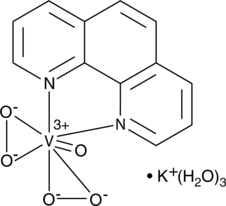
-
GC32163
BQR-695 (NVP-BQR695)
NVP-BQR695
BQR-695 (NVP-BQR695) ist ein PI4KIIIβ Inhibitor mit IC50s von 80 und 3,5 nM fÜr humanes PI4KIIIβ bzw. Plasmodium-Variante von PI4KIIIβ.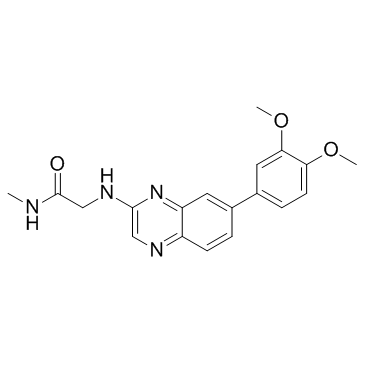
-
GC50140
BRACO 19 trihydrochloride
BRACO 19 Trihydrochlorid ist ein starker Telomerase-/Telomer-Inhibitor, der die Verkappung und katalytische Wirkung von Telomerase verhindert.
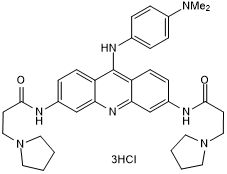
-
GC68800
Braco-19
Braco-19 ist ein wirksamer Hemmstoff der Telomerase/Telomere und verhindert die katalytische Wirkung der Telomerase. Als Ligand für Quadruplex (GQ) stabilisiert Braco-19 die Bildung von GQ-Quadruplexen an den 3V-Telomer-DNA-Stellen und kann zu schneller Alterung oder selektivem Zelltod führen. Braco-19 ist auch ein Hemmstoff der HAdV-Virusreplikation.

-
GC38742
BRD-6929
JQ12
BRD-6929 ist ein potenter, selektiver Inhibitor der Histon-Deacetylase HDAC1 und HDAC2 der Klasse I, der das Gehirn durchdringt, mit einem IC50-Wert von 1 nM bzw. 8 nM.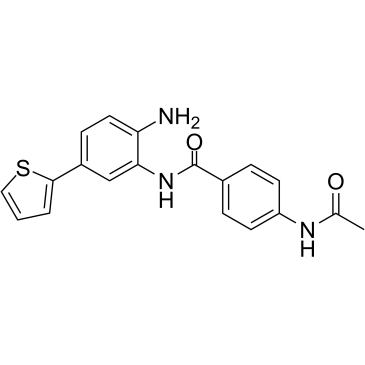
-
GC39238
BRD-K98645985
BRD-K98645985 ist ein BAF (mammalian SWI/SNF) Transkriptionsrepressionsinhibitor mit einem EC50 von ~2,37 μM.
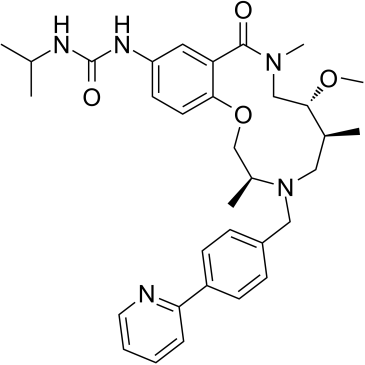
-
GC17683
Brefeldin A
Ascotoxin, BFA, Cyanein, Decumbin, Nectrolide, NSC 56310, NSC 89671, NSC 107456, NSC 244390, Synergisidin
Brefeldin A (BFA) ist eine makrocyclische Lactonverbindung aus Pilzen und ein potenter, reversibler Inhibitor der intrazellulären Vesikelbildung und des Proteintransports zwischen dem endoplasmatischen Retikulum (ER) und dem Golgi-Apparat.
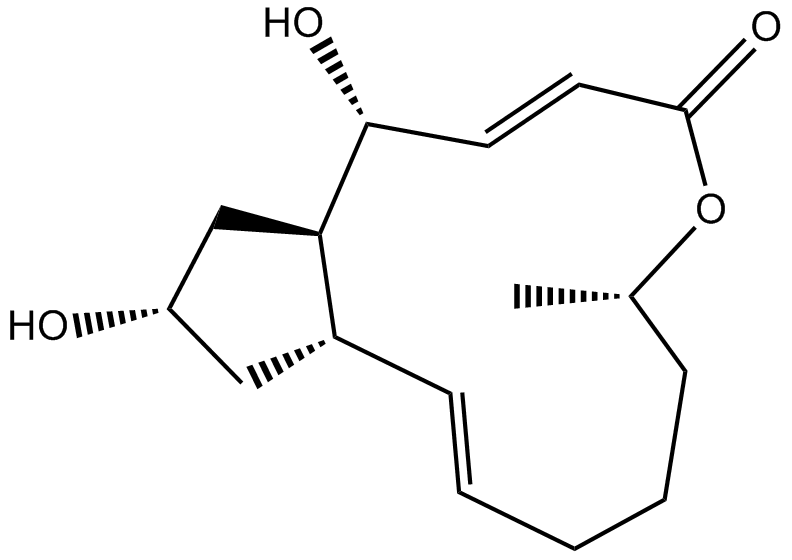
-
GC19082
Brequinar
NSC 368390
Brequinar (DUP785) ist ein potenter Inhibitor der Dihydroorotat-Dehydrogenase (DHODH) mit einem IC50-Wert von 5,2 nM fÜr humanes DHODH.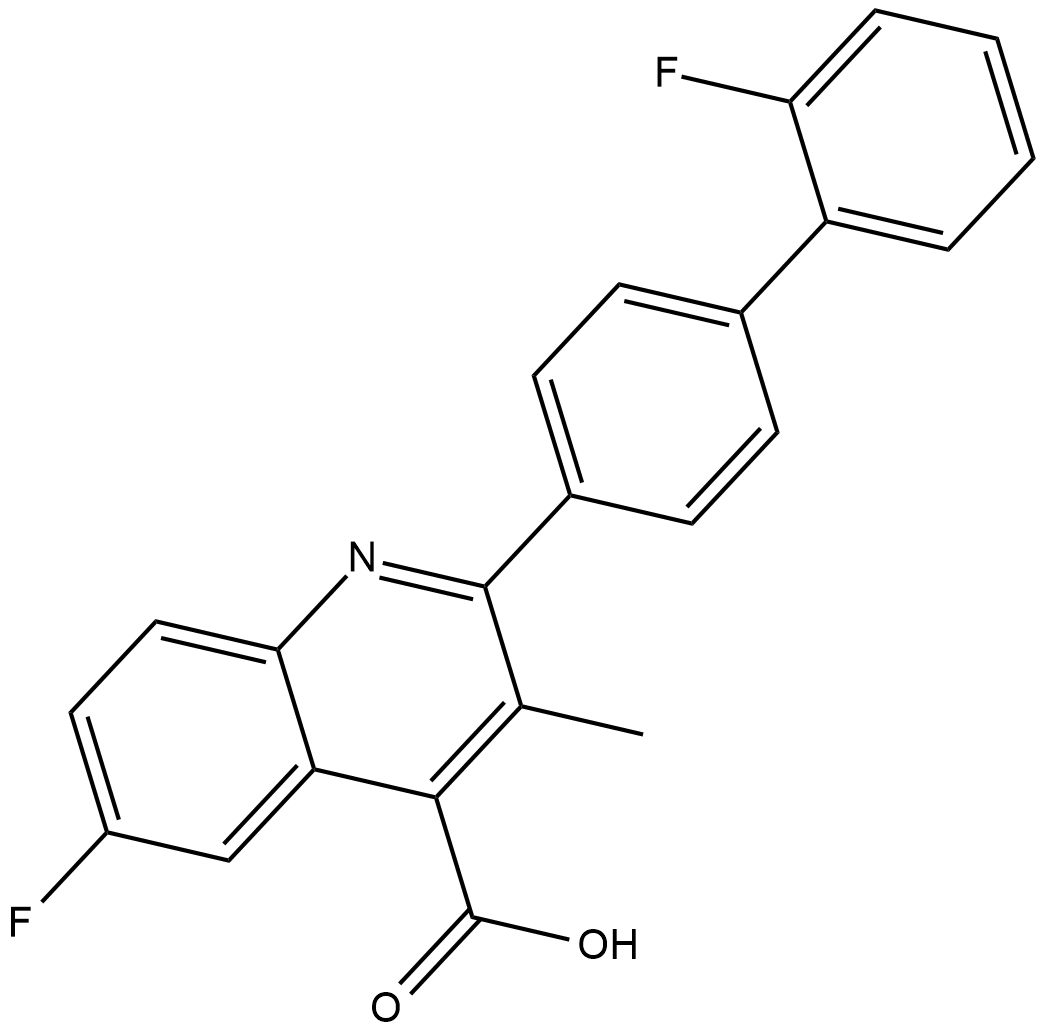
-
GC50377
Brequinar sodium
DuP-785, NSC 368390
Potent and selective DHODH inhibitor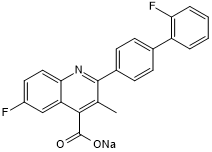
-
GC30156
Brevianamide F (Cyclo(L-Pro-L-Trp))
cyclo-(L-Trp-L-Pro), Cyclo-L-tryptophyl-L-proline
Brevianamid F (Cyclo(L-Pro-L-Trp)) (Cyclo(L-Pro-L-Trp)) ist ein aus Colletotrichum gloeosporioides isoliertes Mykotoxin mit antibakterieller AktivitÄt.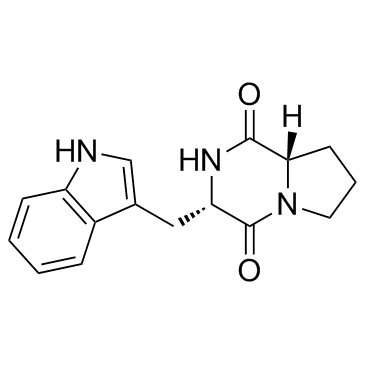
-
GC32238
Brilacidin (PMX 30063)
PMX 30063
Brilacidin (PMX 30063) (PMX 30063) ist ein antiinfektiÖses antimikrobielles Mittel mit MIC90s von 1 und 8 μ g/ml fÜr grampositive Bakterien Streptococcus pneumoniae und Streptococcus viridans und MIC90 von 8 und 4 μ g/ml fÜr Gram -negative Bakterien Haemophilus influenza und Pseudomonas aeruginosa.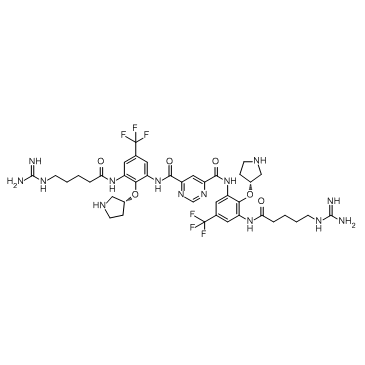
-
GC39353
Brilliant Black BN
CI 28440, E151
Brillantschwarz BN (E151) ist ein Azofarbstoff und ein Lebensmittelfarbstoff.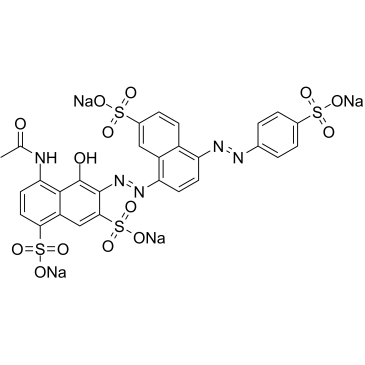
-
GC61529
BRITE-338733
BRITE-338733 ist ein RecA-ATPase-Inhibitor mit einem IC50-Wert von 4,7 μM.
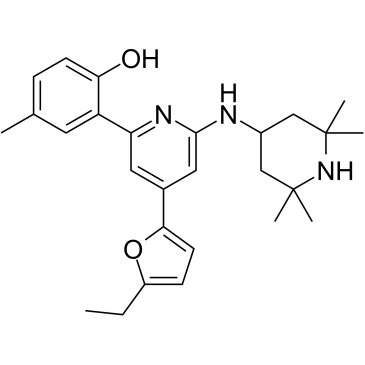
-
GC33923
Brivudine (Bromovinyldeoxyuridine)
BVDU
Brivudin (Bromovinyldeoxyuridin) ist ein Thymidinanalogon mit antiviraler Wirkung und wird zur Frühbehandlung von akutem Herpes zoster eingesetzt.
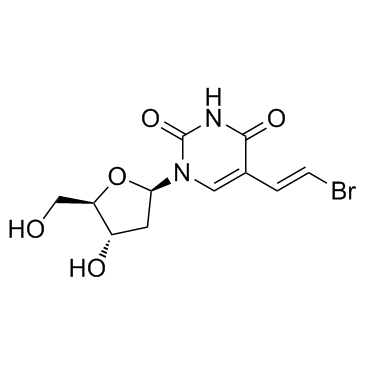
-
GC32371
BRL44385
BRL44385 ist ein potenter und selektiver Inhibitor der Replikation des Herpes-simplex-Virus Typ 1 und 2 (HSV-1 und HSV2), des Varizella-Zoster-Virus (VZV) und des Epstein-Barr-Virus (EBV).
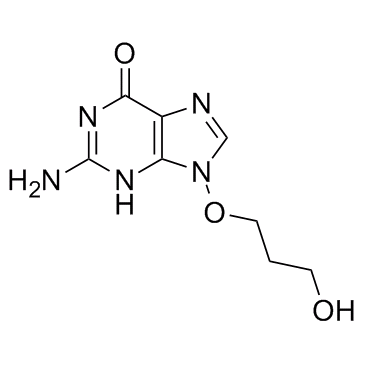
-
GC63622
Brodimoprim
Brodimoprim (Ro 10-5970), ein Trimethoprim-Analogon, ist ein oral wirksamer Dihydrofolat-Reduktase-Hemmer.
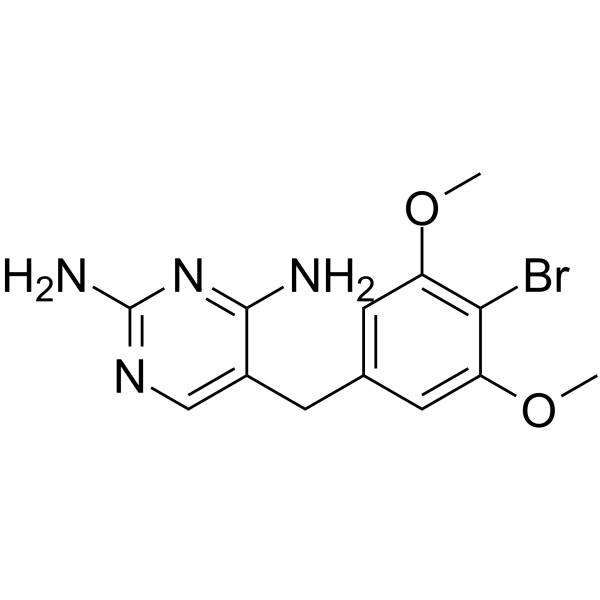
-
GC30921
Bronopol (BNPD)
Bronopol (BNPD) ist ein antimikrobielles Mittel mit geringer SÄugetiertoxizitÄt (in Gebrauchsmengen) und hoher AktivitÄt gegen Bakterien (insbesondere die problematischen gramnegativen Arten).
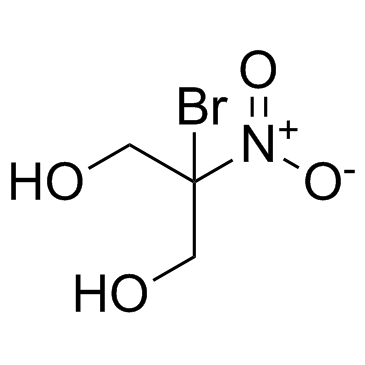
-
GC32155
Broxaldine (Brobenzoxaldine)
Brobenzoxaldine
Broxaldine (Brobenzoxaldine) (Brobenzoxaldine) ist ein Antiprotozoenmittel.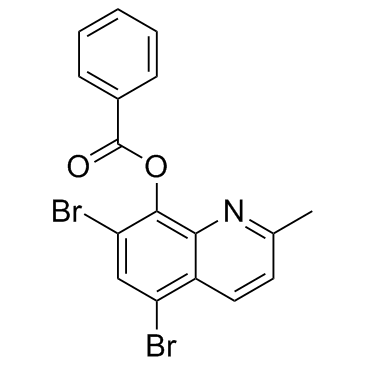
-
GC10347
Broxyquinoline
Broxychinolin (Dibromhydroxychinolin) ist ein starker Hemmer des schweren Fiebers mit Thrombozytopenie-Syndrom-Virus (SFTSV) mit einem IC50 von 5,8 μM.
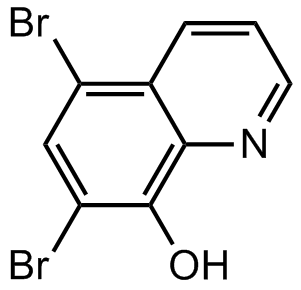
-
GC17948
Bruceine A
Dihydrobrusatol, NSC 310616
Brucein A (NSC310616; Dihydrobrusatol) ist eine natÜrliche Quassinoidverbindung, die aus den getrockneten FrÜchten von Brucea javanica (L.
-
GC65495
Bruceine B
Brucein B hemmt die Proteinsynthese und die NukleinsÄuresynthese.
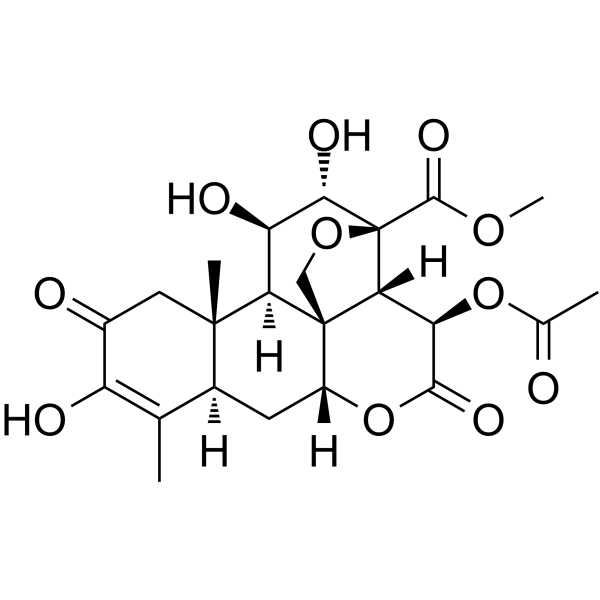
-
GC60667
BSH-IN-1
BSH-IN-1 ist ein potenter und kovalenter Inhibitor von rekombinanten Gallensalzhydrolasen (BSHs) von Darmbakterien mit IC50-Werten von 108 nM und 427 nM fÜr B.
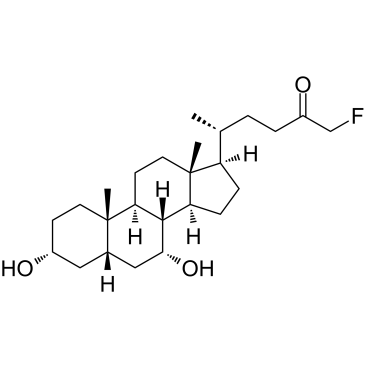
-
GC40680
BTZ043
BTZ043 ist ein Inhibitor der Decaprenyl-Phosphoribose-Epimerase (DprE1) mit MICs von 2,3 nM und 9,2 nM fÜr M.
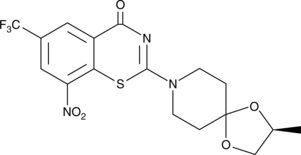
-
GC18127
BTZ043 Racemate
BTZ10526038; Benzothiazinone 10526038
BTZ043 Racemate (BTZ10526038) ist das Racemate von BTZ043.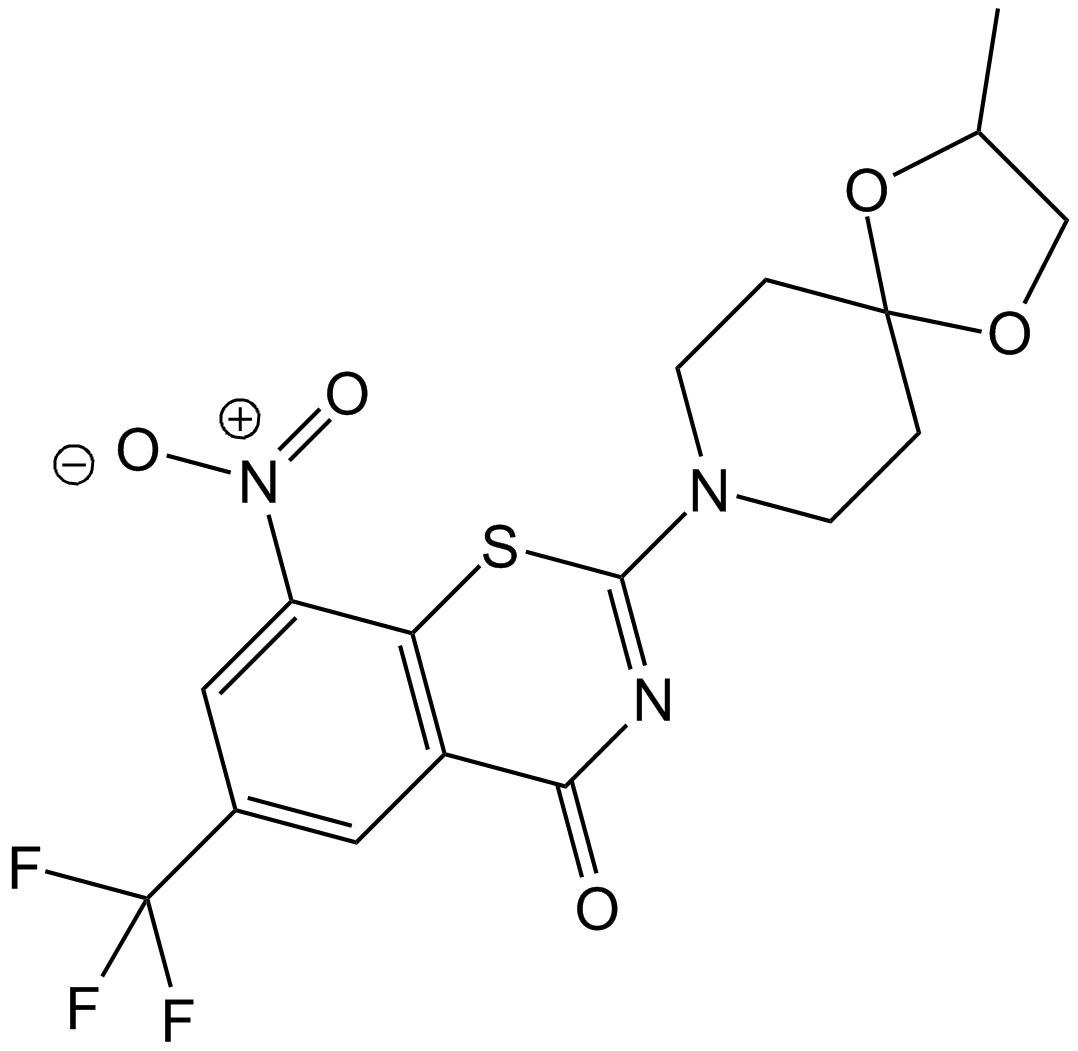
-
GC68817
Buforin II
Buforin II ist ein Protein, das aus dem Magen der asiatischen Kröte Bufo bufo gargarizans isoliert wurde und aus Buforin I stammt. Es handelt sich um ein hochwirksames antimikrobielles Peptid. Buforin II hat antibakterielle Aktivität gegen eine breite Palette von grampositiven und gramnegativen Bakterien.

-
GC68818
Bulevirtide
Myrcludex B
Bulevirtide (Myrcludex B) is an NTCP inhibitor and a linear peptide. Bulevirtide can inhibit the entry of HBV and HDV into liver cells, block HBV infection in liver cells, and participate in HBV transcriptional suppression. Bulevirtide can be used for research on HDV infection and compensated cirrhosis.

-
GC35569
Buparvaquone
BW 720C
Buparvaquon ist ein Hydroxynaphthochinon-Antiprotozoenmittel, das mit Parvaquon und Atovaquon verwandt ist.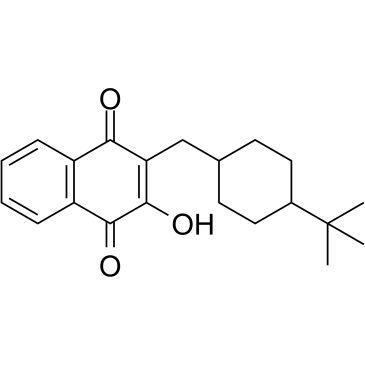
-
GC72395
Burfiralimab
Burfiralimab (hzVSF-v13) is a monoclonal IgG4 antibody against vimentin expressed on the surface of virus-infected cells, with broad-spectrum antiviral activity and anti-inflammatory effects against virus-induced inflammation.

-
GC25181
Butenafine
Butenafine is a synthetic benzylamine antifungal agent.
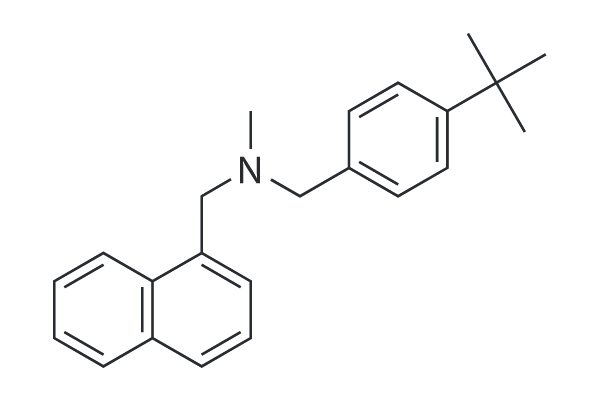
-
GC13207
Butenafine HCl
Butenafin-HCl (KP363-Hydrochlorid) ist ein synthetisches Benzylamin-Antimykotikum, das die Synthese von Sterolen durch Hemmung der Squalenepoxidase hemmt.
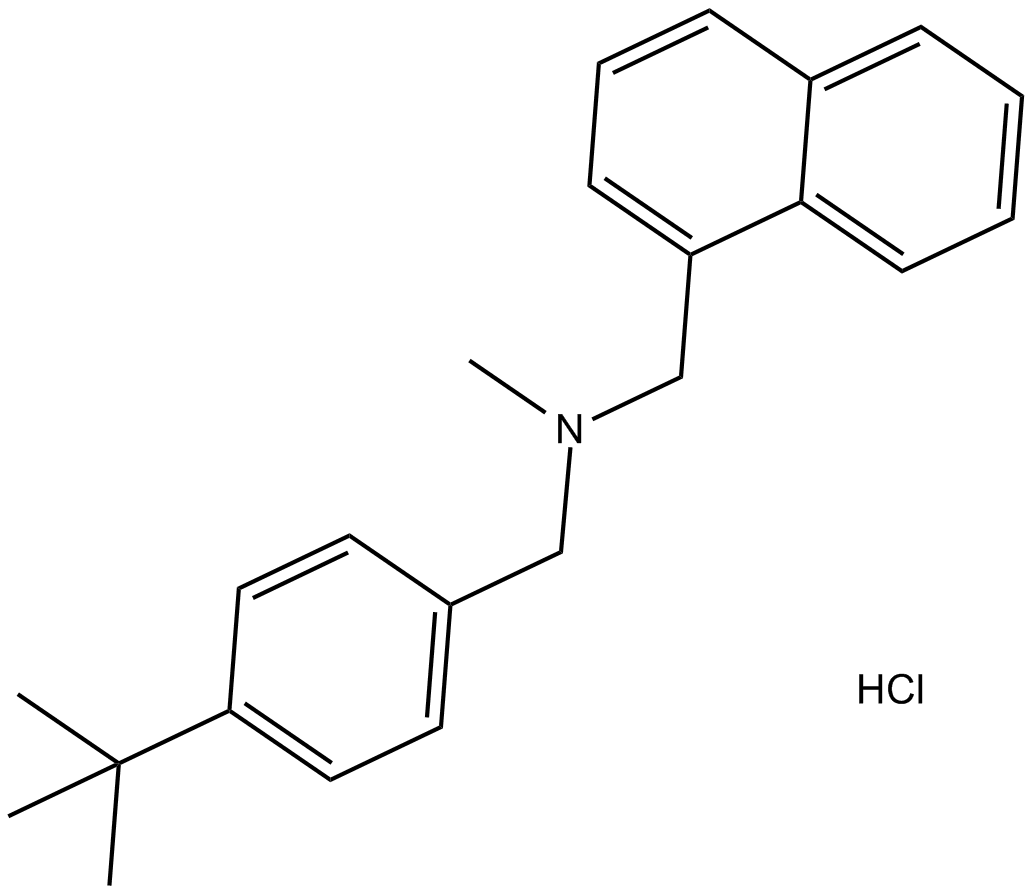
-
GC49136
Butenafine-13C-d3 (hydrochloride)
KP363-13C,d3 hydrochloride
An internal standard for the quantification of butenafine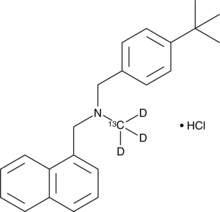
-
GC25182
Butoconazole
Butoconazole is an imidazole antifungal used in gynecology.
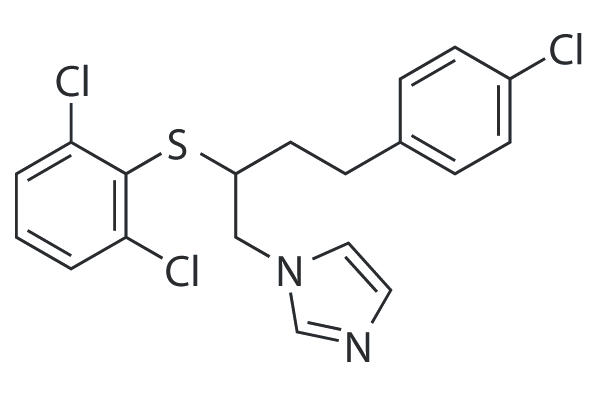
-
GC12984
Butoconazole nitrate
(±)-Butoconazole, RS-35887
Butoconazolnitrat (RS 35887), ein Imidazol-Antimykotikum, wirkt gegen Candida spp.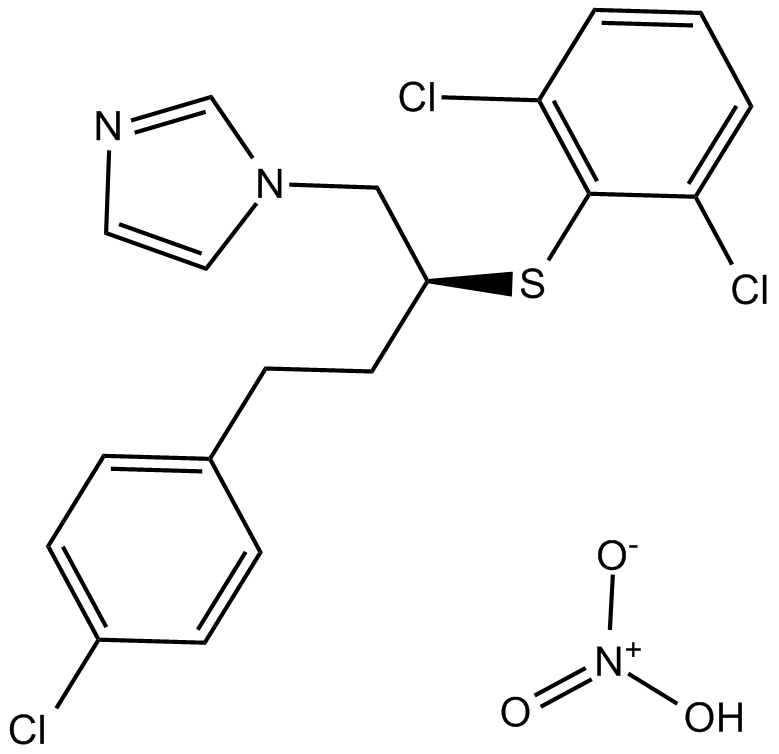
-
GC32255
Butylparaben (Butyl parahydroxybenzoate)
Butoben, Butyl p-hydroxybenzoate, Butyl para-hydroxybenzoate, Butylparaben, p-Hydroxybenzoic Acid butyl ester, NSC 8475, NSC 13164, Tegosept B
Butylparaben (Butylparahydroxybenzoat) ist eine organische Verbindung, hat sich als sehr erfolgreiches antimikrobielles Konservierungsmittel in Kosmetika, auch in Medikamentensuspensionen und als Aromazusatz in Lebensmitteln bewÄhrt.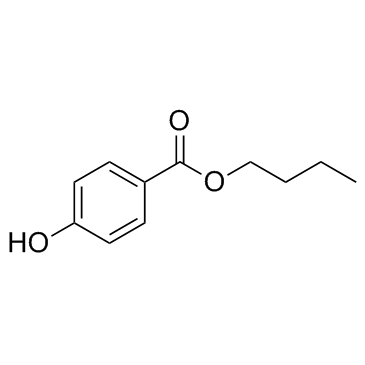
-
GC72705
BVDU 5′-Triphosphate ammonium
BVDU 5′-Triphosphate ammonium ist ein Antivirus-Mittel mit 5′-Triphosphat-Label, das auf virale DNA-Polymerase abzielt.

-
GC39739
Bz-RS-iSer(3-Ph)-OMe
Bz-RS-iSer(3-Ph)-OMe (Verbindung 2), ein Taxol-Derivat, hemmt den HSV-Replikationszyklus bei geringer ZytotoxizitÄt, blockiert die mitotische Teilung von Vero-Zellen, beeinflusst die M-MSV-induzierte TumorgrÖße und beeinflusst die Immunantwort durch Hemmung von PHA -induzierte T-Lymphozyten-Proliferation.
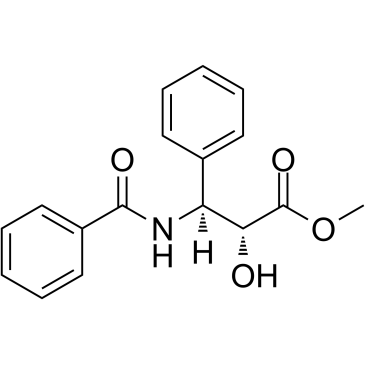
-
GC13643
c-di-AMP
c-di-AMP (cyclisches Diadenylat) ist ein STING-Agonist, der an das Transmembranprotein STING bindet und dadurch den TBK3-IRF3-Signalweg aktiviert, der anschließend die Produktion von Typ-I-IFN und TNF auslÖst.
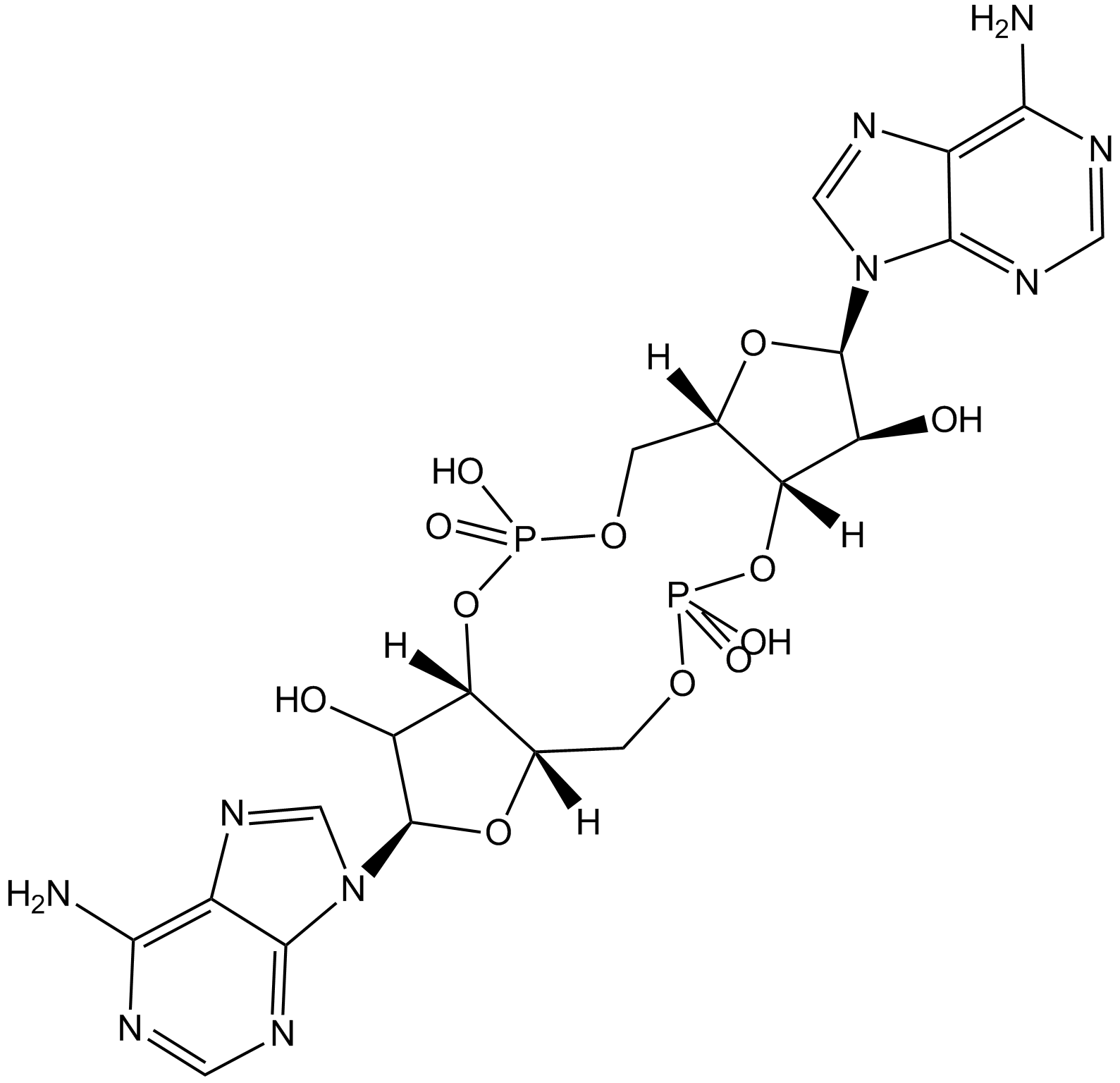
-
GC62198
c-di-AMP sodium
c-di-AMP, Cyclic di-Adenosine monophosphate, 3',5'-Cyclic diadenylic acid, Cyclic diadenylate
C-di-AMP is a STING agonist, which binds to the transmembrane protein STING, thereby activating the TBK3-IRF3 signaling pathway, subsequently triggering the production of type I IFN and TNF.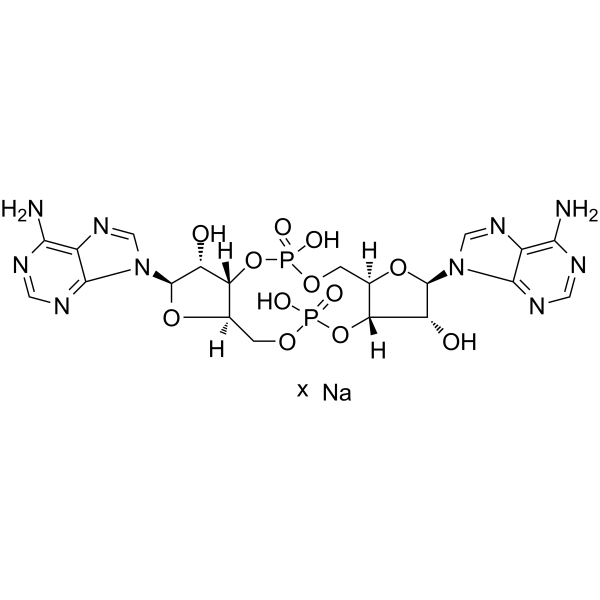
-
GC43020
C12E8
Octaethylene Glycol Monododecyl Ether
C12E8 (C12E8) ist ein nichtionisches Detergens, das fÜr die Extraktion von Membranproteinen verwendet werden kann.
-
GC43031
C16 Galactosylceramide (d18:1/16:0)
Galactosylceramide (d18:1/16:0), Galβ-Cer(d18:1/16:0), GalCer(d18:1/16:0), N-Hexadecanoyl-β-D-Galactosylceramide, Palmitoyl GalCer
C16 Galactosylceramide is a glycosphingolipid that contains a galactose moiety attached to a ceramide acylated with palmitic acid .
-
GC68449
CA inhibitor 1
GS-6207 analog

-
GC66051
Cabotegravir sodium
GSK-1265744 sodium; S/GSK1265744 sodium
Cabotegravir (GSK-1265744)-Natrium ist ein oral aktiver und lang wirkender HIV-Integrase-Inhibitor und Inhibitor des organischen Anionentransporters 1/3 (OAT1/OAT3) mit IC50-Werten von 2,5 nM, 0,41 μM und 0,81 μM fÜr HIVADA, OAT3 bzw. OAT1. Cabotegravir-Natrium wird hauptsÄchlich durch die Uridindiphosphat-Glucuronosyltransferase (UGT) 1A1 metabolisiert und hat ein geringes Potenzial fÜr Wechselwirkungen mit anderen antiretroviralen Arzneimitteln (ARVs). Cabotegravir-Natrium kann zur Erforschung von AIDS verwendet werden.
-
GC19085
Cadazolid
ACT-179811
Cadazolid (ACT-179811) ist ein neues Oxazolidinon-Antibiotikum mit starker AktivitÄt gegen Clostridium difficile.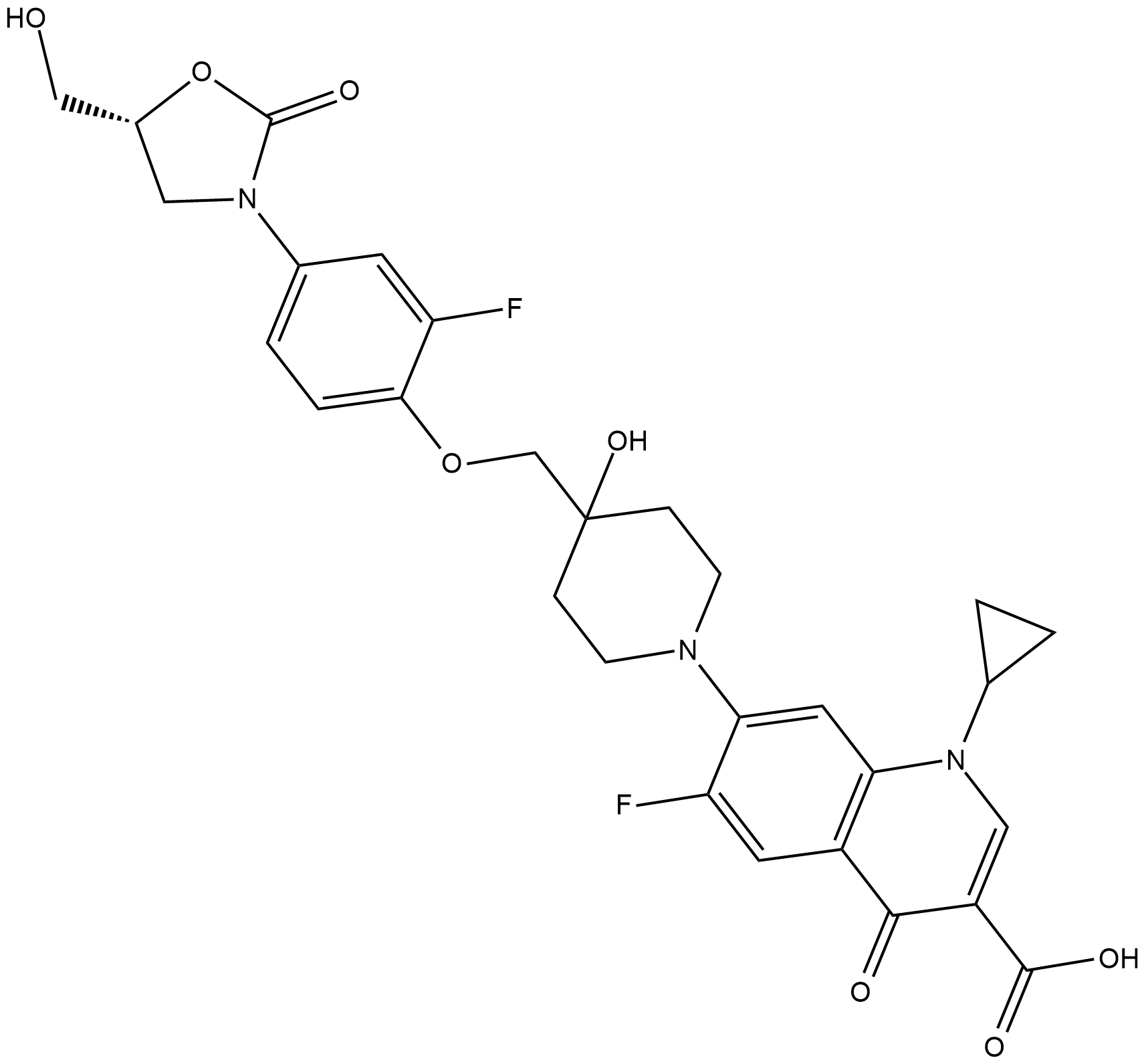
-
GC64102
Cadrofloxacin
Cadrofloxacin (Caderofloxacin; CS-940), ein oral wirksames Fluorchinolon, ist wirksam gegen aerobe/anaerobe grampositive und gramnegative Bakterien.
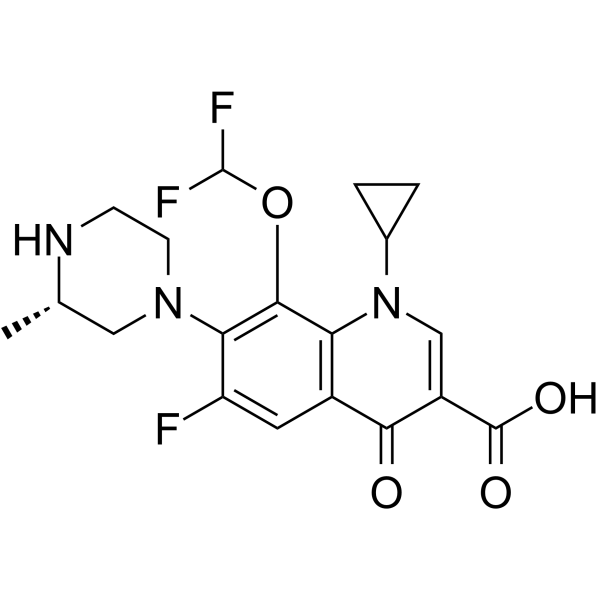
-
GC30960
Caerulomycin A (Cerulomycin)
Caerulomycin A (Cerulomycin) (Cerulomycin; Caerulomycin), ein Antimykotikum, induziert die Bildung von T-Zellen, verstÄrkt die TGF-β-Smad3-Proteinsignalisierung durch UnterdrÜckung der Interferon-&7#947;-induzierten STAT1-SignalÜbertragung.
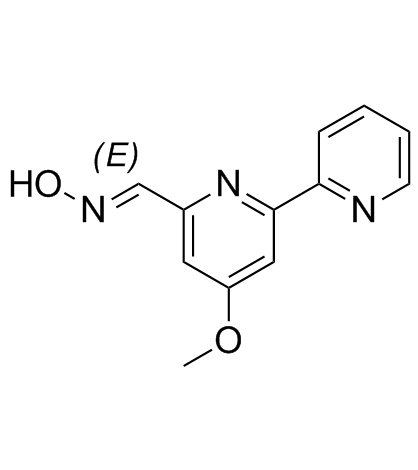
-
GC40490
Caffeic Acid methyl ester
Methyl Caffeate, Methyl 3,4-dihydroxycinnamate
KaffeesÄuremethylester, ein antimikrobielles Mittel, zeigt moderate antimikrobielle und herausragende antimykobakterielle AktivitÄten.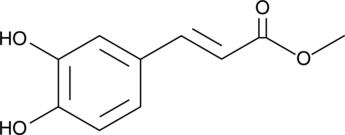
-
GC70394
Calarene
Calarene ist ein Insektizid, das aus dem Stamm von Kadsura Heteroklit gewonnen werden kann.

-
GC60668
Calcimycin hemimagnesium
Calcimycin (A-23187)-HÄmimagnesium ist ein Antibiotikum und ein einzigartiges Ionophor mit zweiwertigen Kationen (wie Calcium und Magnesium).
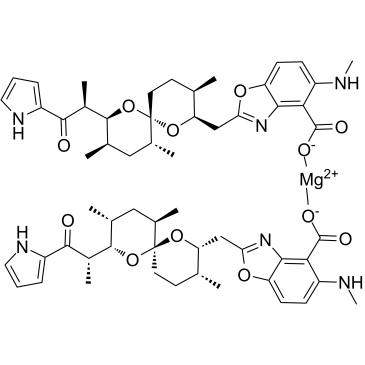
-
GC68823
CamA-IN-1
CaMA-IN-1 ist ein Inhibitor der DNA-Adenin-Methyltransferase (CamA), der spezifisch für Clostridioides difficile ist. CaMA-IN-1 hemmt die Aktivität von CamA, wobei die IC50 und Kd Werte bei 0,4 µM bzw. 0,2 µM liegen. CaMA-IN-1 kann zur Erforschung von Clostridioides difficile Infektionen (CDI) eingesetzt werden.

-
GC18922
Camalexin
Camalexin ist ein aus Camelina sativa (Cruciferae) isoliertes Phytoalexin mit antibakteriellen, antimykotischen, antiproliferativen und AntikrebsaktivitÄten.
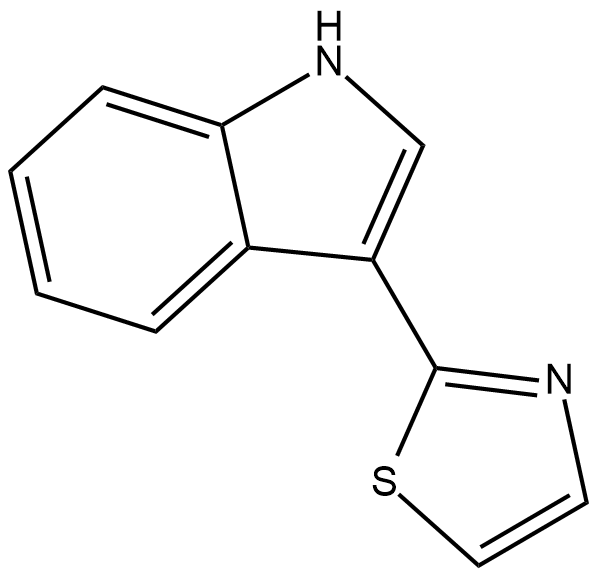
-
GC31953
Camphor ((±)-Camphor)
Campher ((±)-Campher) ((±)-Campher ((±)-Campher)) ist ein topisches Antiinfektivum und Antipruritikum und innerlich als Stimulans und Karminativum.
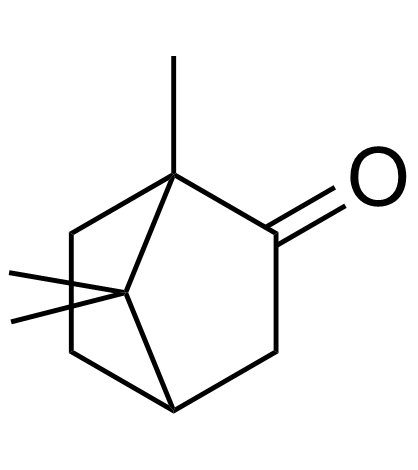
-
GC71504
Camptothecin-d5
Camptothecin-d5 ist das Deuterium mit der Bezeichnung Camptothecin.

-
GC68825
Canocapavir
ZM-H1505R
Canocapavir (ZM-H1505R) has oral antiviral activity. Canocapavir is a HBV capsid inhibitor that can be used for the research of chronic hepatitis B.

-
GC43138
CAP 3
CAP 3 is a cholic acid-peptide conjugate (CAP) with antibacterial activity.
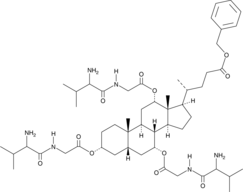
-
GC16198
Capreomycin Sulfate
Capreomycinsulfat ist ein Peptid-Antibiotikum, das Üblicherweise den Aminoglykosiden zugeordnet wird und in Kombination mit anderen Antibiotika gegen MDR-Tuberkulose verabreicht wird.
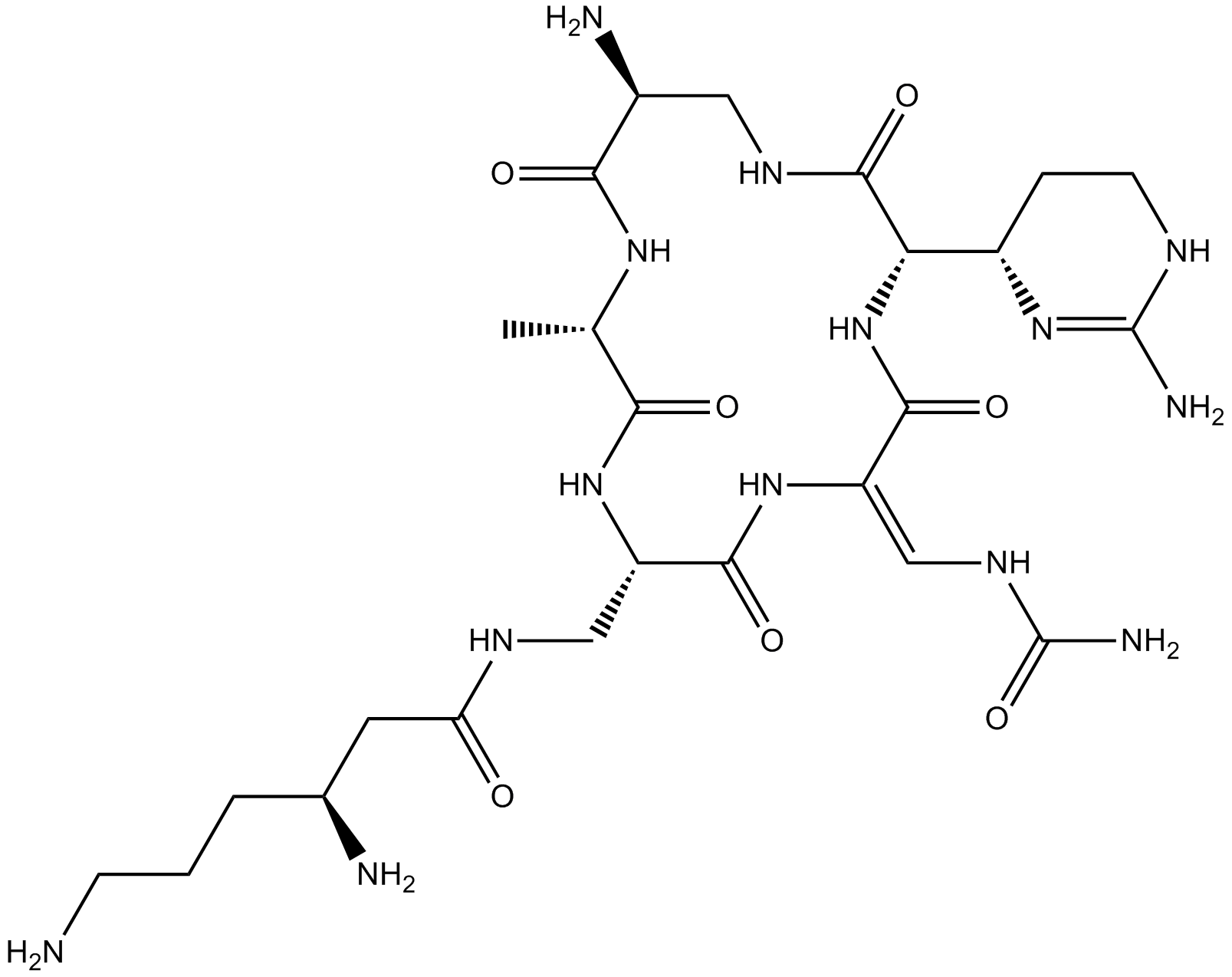
-
GC47035
Captan
NSC 36726
Captan ist ein gÄngiges landwirtschaftliches Fungizid, das zur BekÄmpfung von Botrytis, Fusarium, Fusicoccum und Pythium verwendet wird.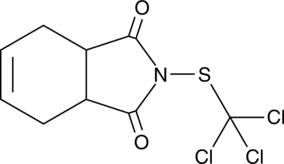
-
GC35604
Carabrone
Carabrone wird aus den FrÜchten von Carpesium abrotanoides isoliert, ist ein bekanntes Sesquiterpen und weist signifikante antibakterielle und AntitumoraktivitÄten auf.
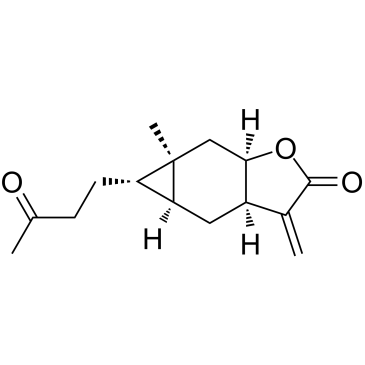
-
GC38896
Caracemide
Caracemid (NSC-253272) hemmt das Enzym Ribonukleotidreduktase von Escherichia coli.
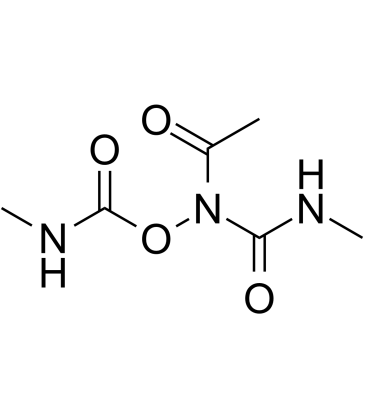
-
GC16295
Carbadox
Carbadox ist eine antibiotische Chinoxalin-Di-N-oxid-Verbindung, die in großem Umfang an Schweine im Aufzuchtalter verfÜttert wird, um Darmerkrankungen zu kontrollieren und die Futtereffizienz zu verbessern.
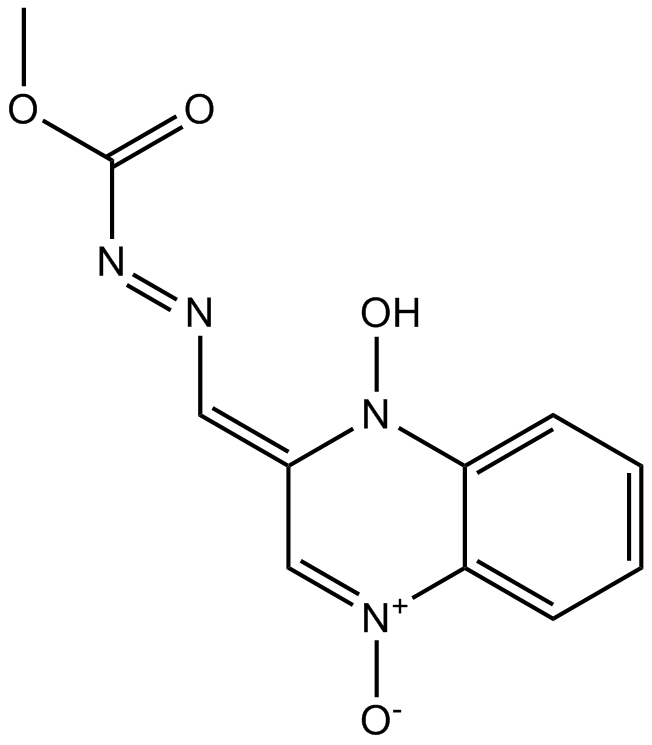
-
GC32147
Carbendazim
A-118, NSC 109874, U-32104
Carbendazim ist ein starkes und oral aktives Breitspektrum-Benzimidazol-Fungizid und kann als Pestizid fÜr die Erforschung von Pilzkrankheiten wie Seproria,FusariumundSclerotina eingesetzt werden.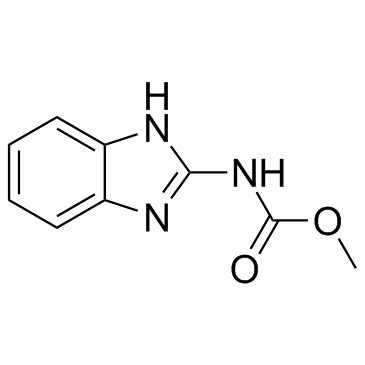
-
GC16053
Carbenicillin
Carbenicillin ist ein halbsynthetisches Penicillin-Derivat mit breitem Spektrum, das parenteral verwendet wird.
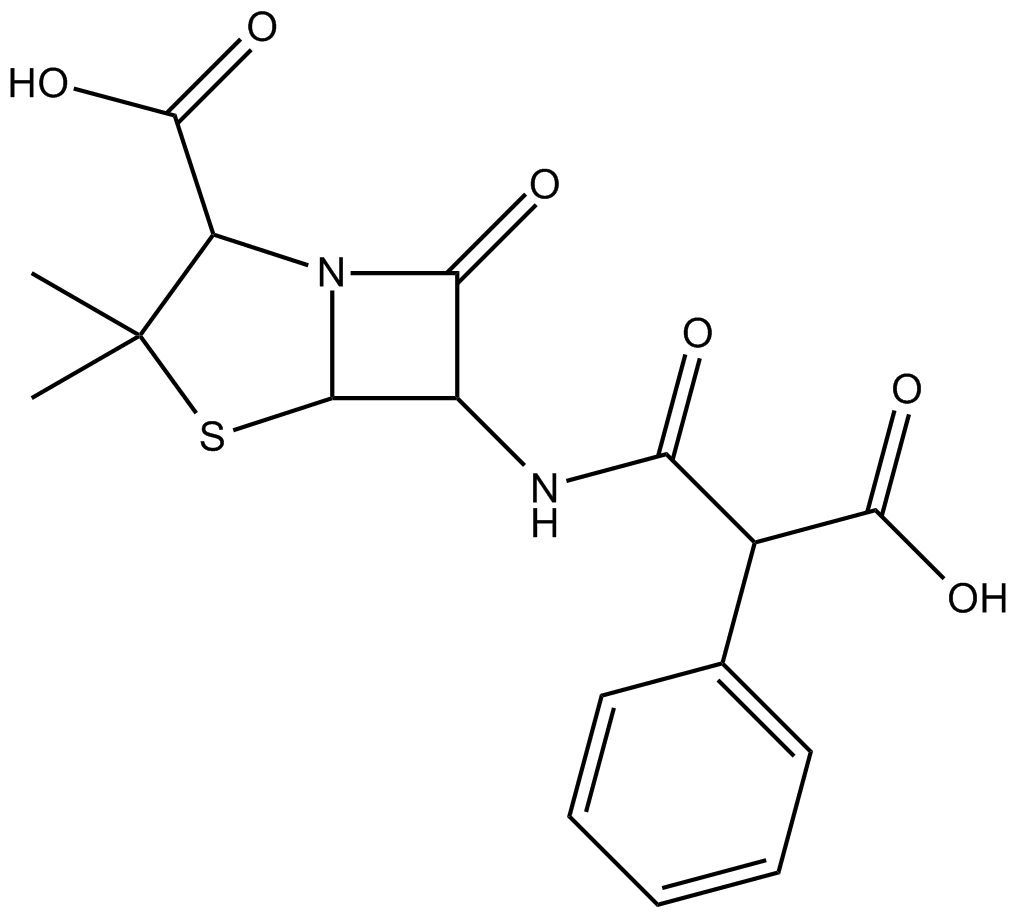
-
GC17633
Carbenicillin, Disodium Salt
BRL 2064, α-Carboxybenzylpenicillin, CP 15,639-2, NSC 111071;Cabicillin
A carboxypenicillin antibiotic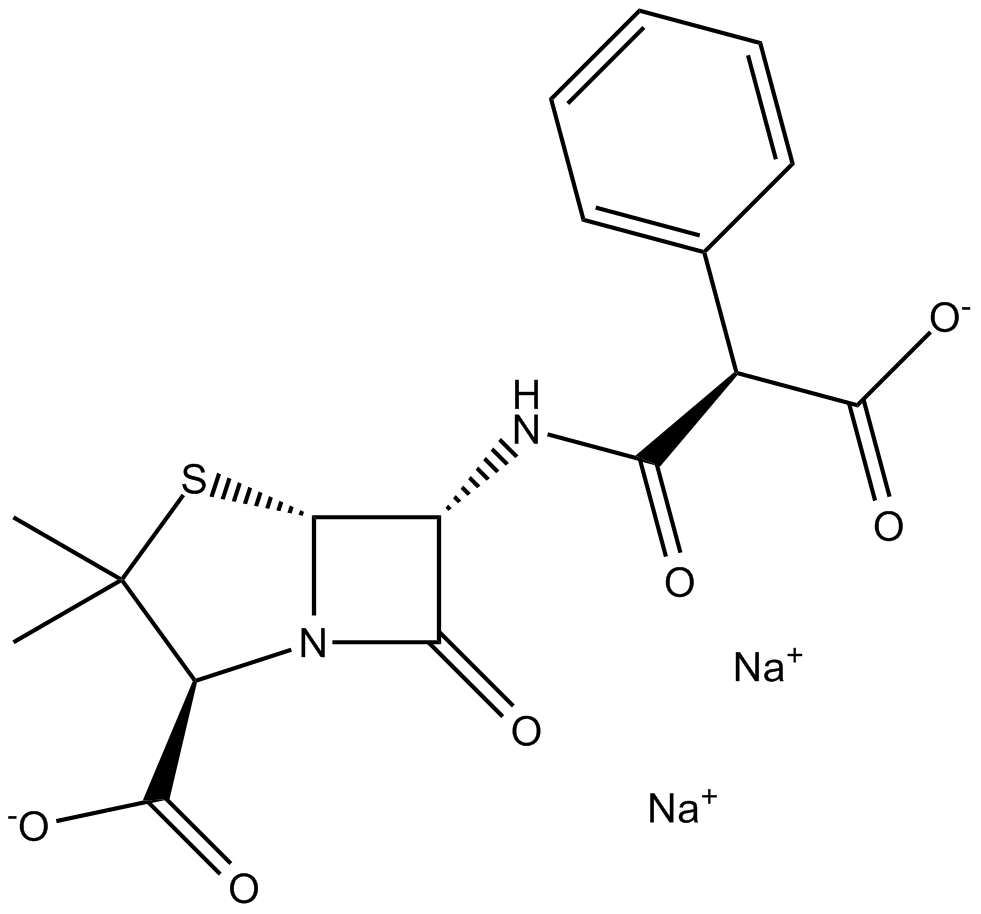
-
GC60099
Carbocisteine
Carbocistein, ein Mukolytikum, kann zur Erforschung der chronisch obstruktiven Lungenerkrankung (COPD) eingesetzt werden.
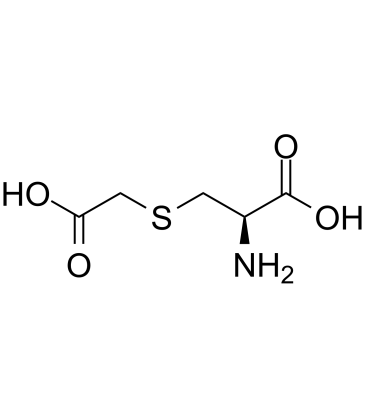
-
GC35606
Carbodine
Carbodin (Carbozyklisches Cytidin) ist ein antivirales Breitbandmittel, das gegen DNA-Viren, (+)RNA-Viren, (-)RNA-Viren, Paramyxo-, Rhabdo- und (+/-)RNA-Viren aktiv ist und auf CTP-Synthetase abzielt der UTP in CTP umwandelt.
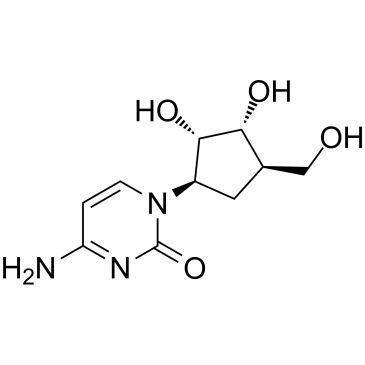
-
GC32257
Carbosulfan
Carbosulfan hemmte relativ stark CYP3A4 und mÄßig CYP1A1/2 und CYP2C19 in gepoolten HLM (menschliche Lebern).
